Table of Contents
Visit Southeastern Anatolia Region in Turkey
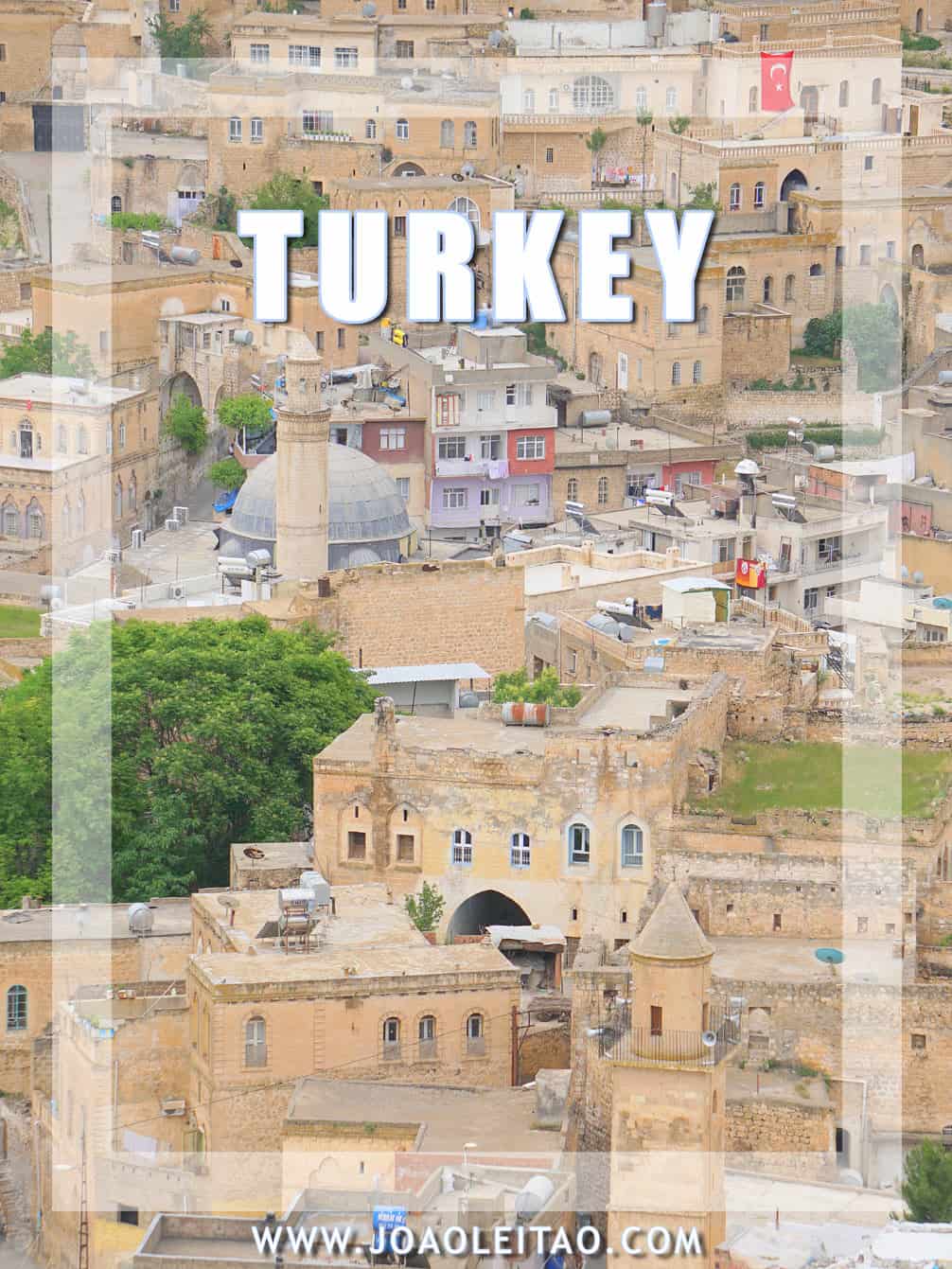
In this region, mostly inhabited by Kurds, live the most welcoming people on earth. This is just one of the many other reasons that make this part of the world a traveler’s paradise: an efficient public transport network, a fascinating historical and architectural heritage, a rich past made of overlapping multiple civilizations and empires, a region not yet overrun by mass tourism, and a pleasant climate for most of the year.
Besides, it’s very easy to get there. Pegasus, a Turkish low-cost carrier, flies from Istanbul to a series of airports located in the region at ridiculously affordable prices. Once in the area, travelers can use local public transport, especially the vans connecting the main areas, but if you can have a car that’s even better because many of the points of interest are in remote locations.
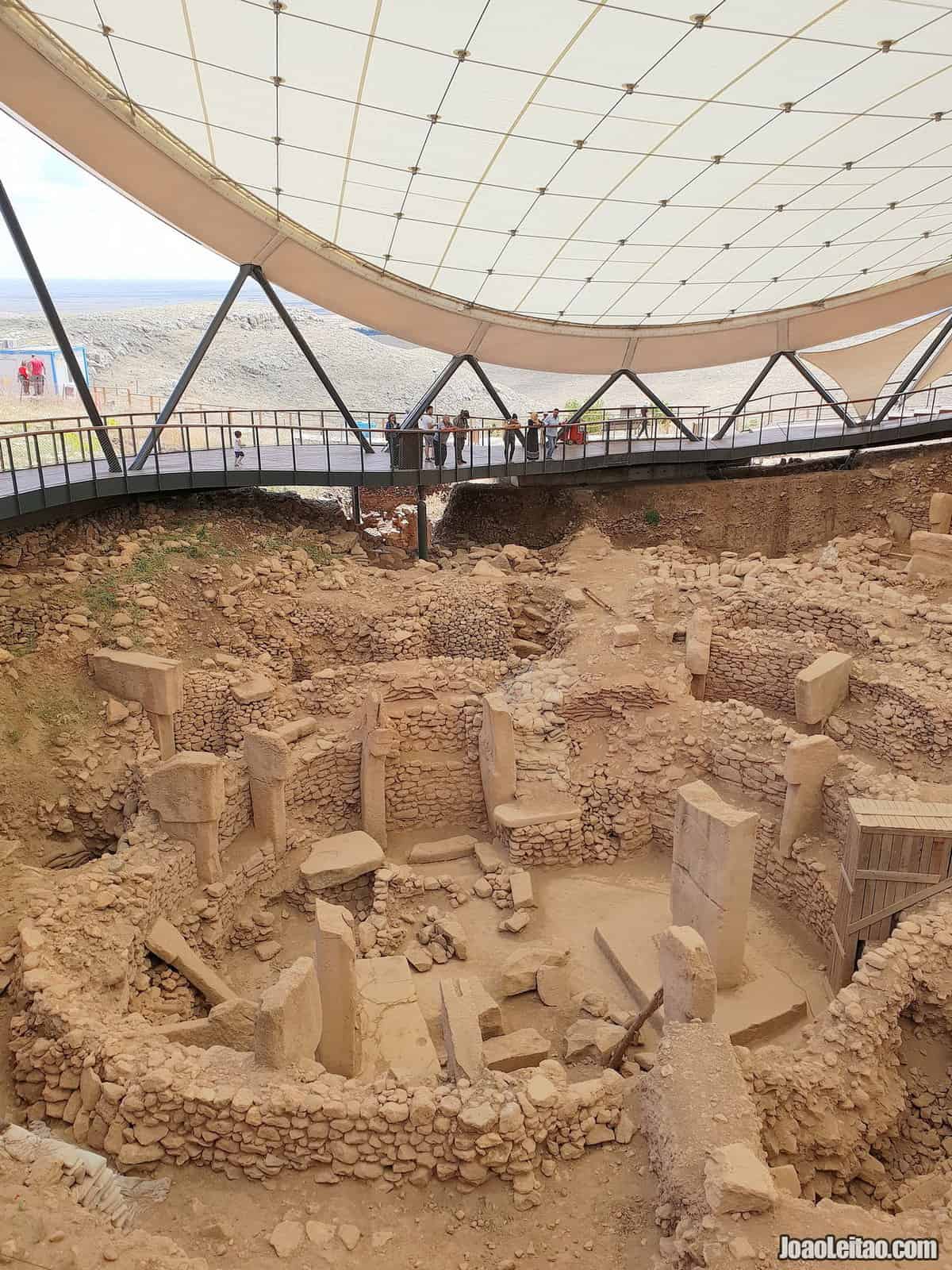
It would be difficult to present a complete itinerary in a few lines, but some cities are must-sees, as is the case of Mardin, Midyat and Sanliurfa, as well as other more remote, but of significant scientific, cultural or historical importance, such as Gobekli Tepe, the oldest temple in the world, or the ill-fated Hasankeyf, a magnificent historic village doomed to be submerged under the reservoir of a new dam.
History of Southeast Anatolia
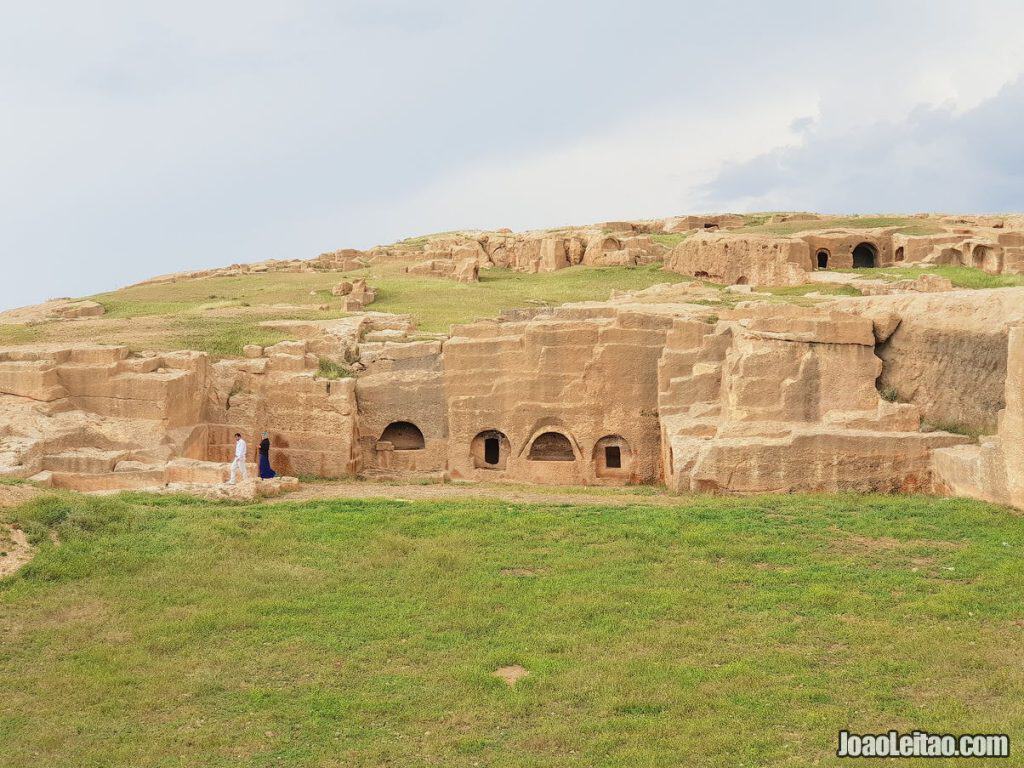
The two rivers in this region – Euphrates and Tigre – are in the origin of our History. Not that of the birth of humankind, but that of early civilizations and first advances, such as the appearance of the first method of writing and the first known religions.
Some of the great civilizations of the History of Humanity grew here or came here. These overlapping levels of cultural, religious and ethnic influence created a complex mosaic with diverse peoples sharing the same region.
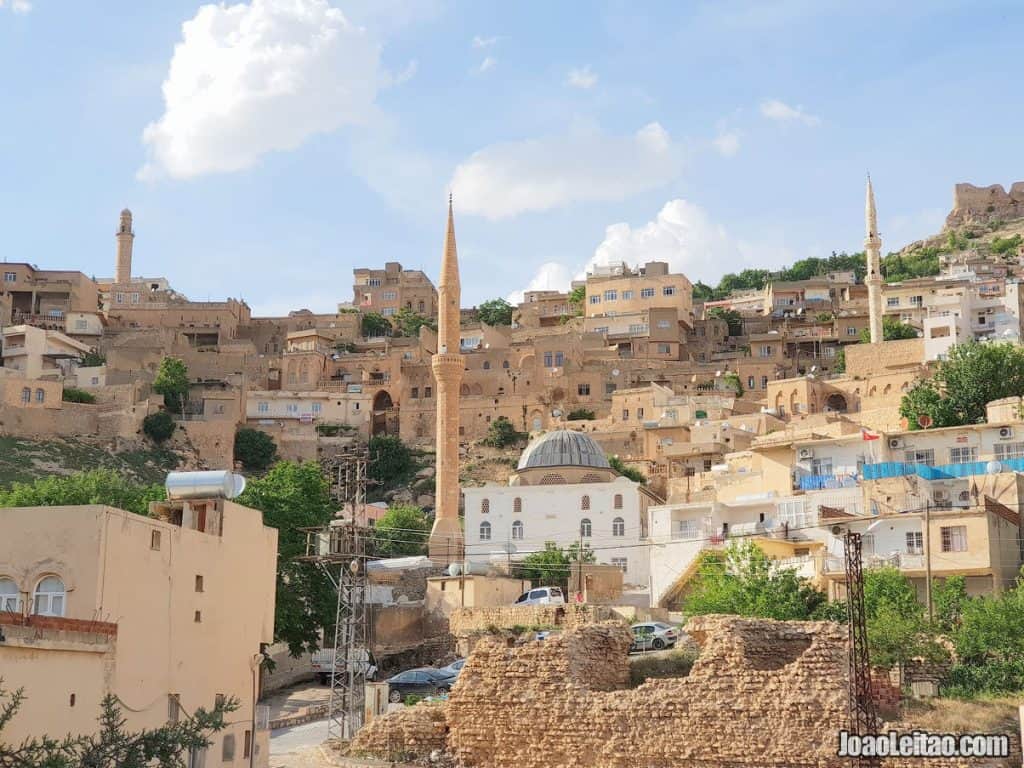
Assyrians, Hittites, Sumerians, and Babylonians preceded the Macedonians, Seleucids, and Romans. From the division of the Roman Empire came the Byzantium ruling. The Arabs eventually arrived at these places in the middle of the 7th century. The Crusaders also passed through here. There were invasions and fleeting raids, until the Ottomans conquered the whole region, passing on their heritage to modern Turkey.
Nowadays the region is divided into nine provinces: Adiyaman, Batman, Diyarbakir, Gaziantep, Kilis, Mardin, Sanliurfa, Siirt, and Sirnak.
I hope this article helps to plan your perfect trip to the beautiful Southeastern Anatolia. If you visit Turkey, you cannot miss this amazing region.
Visit Southeastern Anatolia
Alphabetical order

Bazda Cave 
Birecik 
Cizre 
Cimdin Castle 
Dara 
Diyarbakir 
Eski-Savasan-Koy 
Euphrates River 
Gaziantep 
Gobekli Tepe 
Gulgoze 
Monastery Mor Gabriel 
Halfeti 
Han el-Barur 
Harran 
Hasankeyf 
Mardin 
Midyat 
Nemrut-Dag 
Nusaybin 
Castle Rumkale 
Sanliurfa 
Savur 
Sumatar Ruins 
Suayip Sehri 
Tektek National Park 
Yesemek Quarry 
Zeugma
1. Bazda Cave
Visit Bazda Cave in Turkey
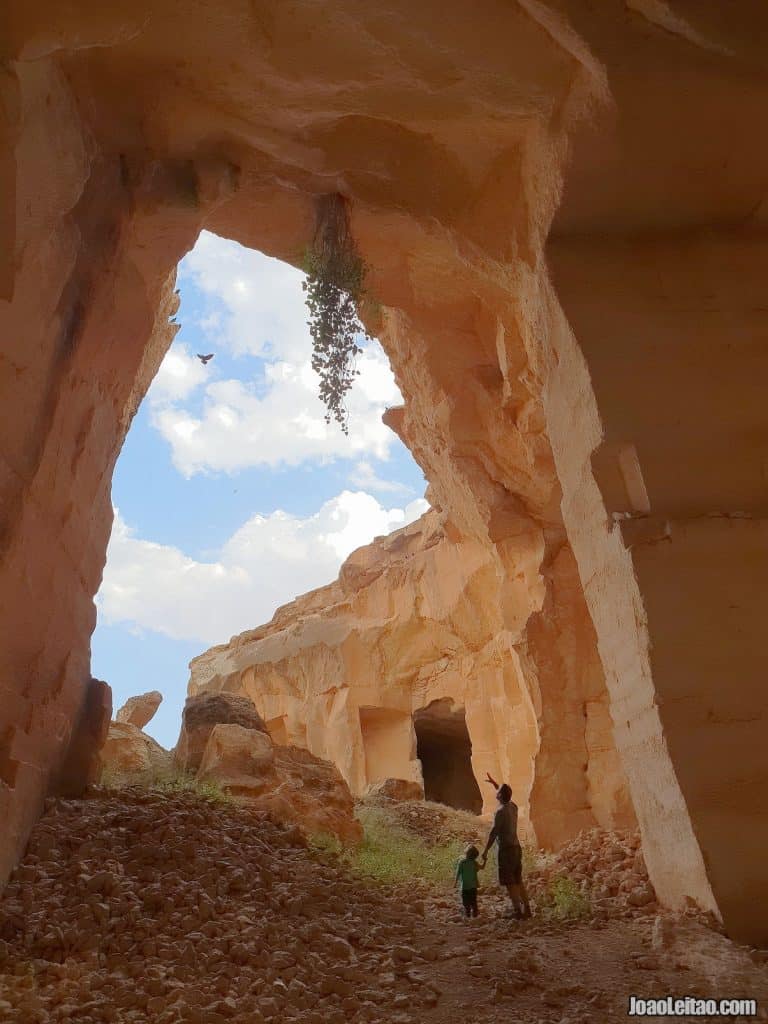
Imagine a desert landscape but where there is lots of color. The dark yellow of the soils, painted with the green of the grass that sprouts here and there, contrasts with the blue sky. We are in the Harran Valley, about 65 km southeast of Sanliurfa and it’s here you’ll find the Bazda Caves.
The stones needed to build the ancient city of Harran were extracted from an open-air quarry here, usually filled with water, which created several caves caused by stone removal work.
The interior of the main cave, where there are now cement steps for easy access, is surprising. The geometric cuts that allowed Harran’s raw material to be removed created an almost cubist scene inside the cave. The space is big, more than ten meters high. Somewhere in one of the caves, they found inscriptions confirming what happened to the stones that were taken away by thousands of slaves.
The larger caves have two levels, branching out into an infinity of galleries. In one of the large chambers, there is an opening upwards, allowing you to see the sky with spectacular light effects.
To visit the Bazda Caves, you’ll need a car of your own. There is a small village next to the caves, but there is no public transport to the place.
2. Birecik
Visit Birecik in Turkey
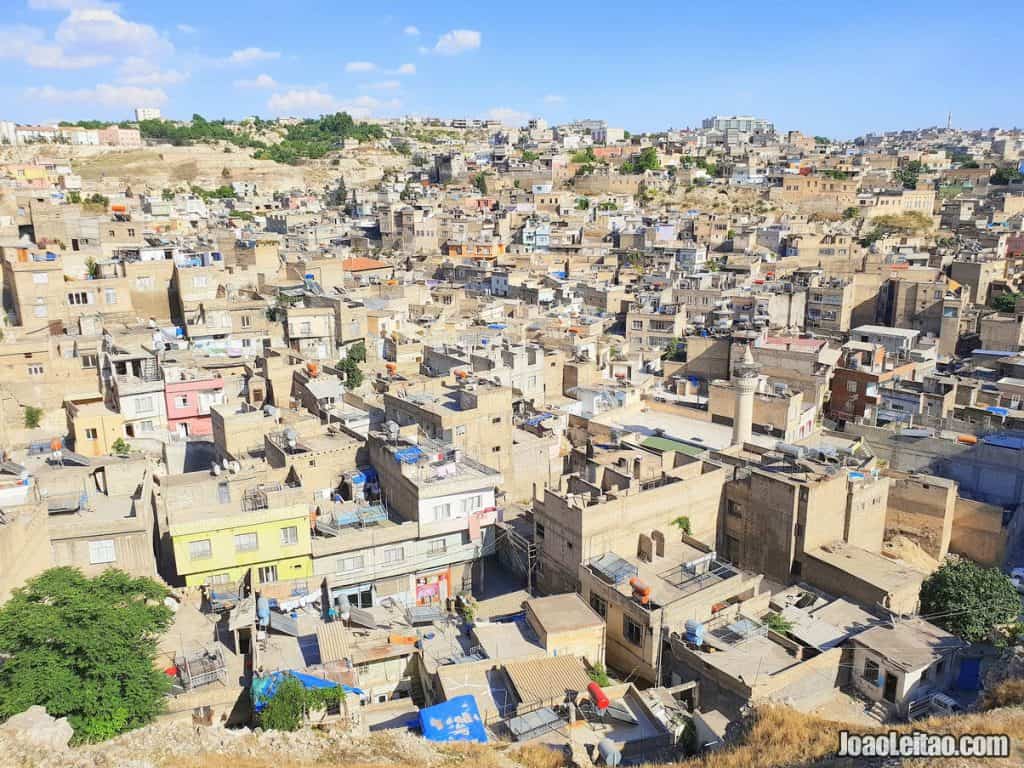
Birecik is located halfway between Sanliurfa and Gaziantep, 80 km from the first and 60 km from the latter. The city rises on the western bank of the Euphrates River, with some developments on the opposite side of that waterway.
Its name may come from “Birtho,” which means “hill” in Assyrian. There is no trace of such a hill nowadays, but the archaeologists suspect that the fact that only one of the twelve bastions that defended the castle exists could indicate the past existence of an elevation.
It’s an old city, founded around 2000 BC, although there is not much left of its oldest past. It was ruled by Hittites, Assyrians, Persians, Byzantines, and Arabs. It was known to the Crusaders, was destroyed by Timur in the 14th century and 1895 was the background of one of the most violent episodes of the Armenian massacre.
Visitors should pass through the old castle, walking along its walls, where the most picturesque part of the city is. Bird lovers come to Birecik to see the colony of the northern bald ibis, known here as Kelaynak. This species is almost extinct, but in Birecik you can easily spot them between February and July. There even used to be a shrine here built in 1972 by the Turkish authorities.
The ancient cemetery from the early Bronze Age is also a must-see, which was used for 500 years and where more than 300 tombs were excavated between 1997 and 1998.
3. Cizre
Visit Cizre in Turkey
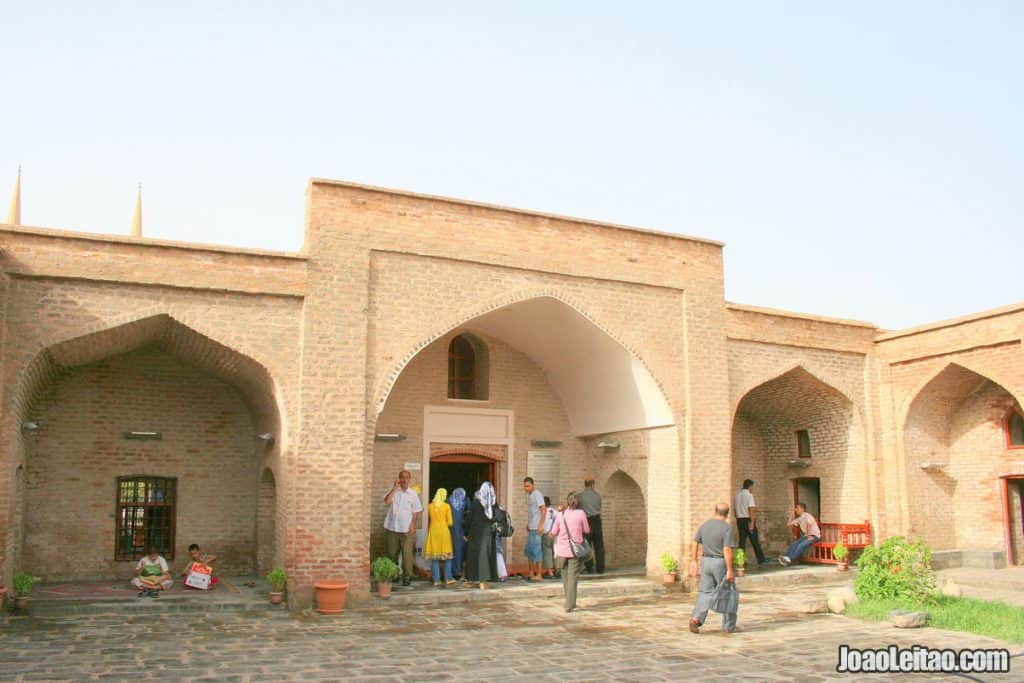
This city of about 100,000 inhabitants, founded on the west bank of the Tigris River, is located along the borders with Syria and Iraq, about 90 km east of Midyat.
Between 2014 and 2016 it was involved in violent conflicts opposing government forces to Kurdish rebels linked to the PKK, which resulted in the partial destruction of the city.
It was ruled by the Assyrians and was a Roman fortress. It was known as Gazarta (or Jazīrat Ibn ‘Umar in Arabic), and a relatively important city in the Middle Ages in a vital point of the route that united High Mesopotamia to Armenia.
In the 19th century it was the scenery for a rebellion against the Ottoman Empire and in 1915 more than a thousand Armenians were murdered here, while the women of the community were deported to Mosul in conditions that caused many not to reach their destination.
4. Çimdin Kalesi
Visit Çimdin Kalesi in Turkey
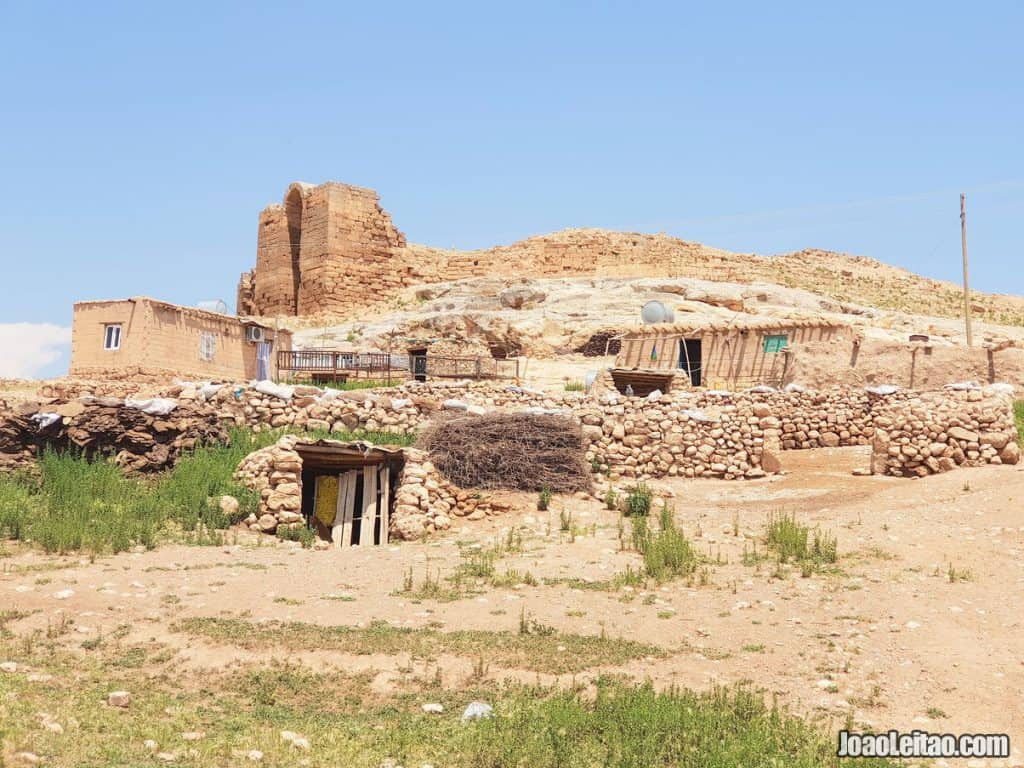
Çimdin Castle is located on the outskirts of Viransehir, which is about 100 km east of Sanliurfa.
The fortress is almost 2,000 years old, having been occupied continuously by several civilizations, but is now at risk due to its advanced state of degradation.
It’s positioned on top of a hill and was built with blocks of limestone. On its walls, which reach four meters wide, two gates were opened, one to the east and one to the west. The whole castle is surrounded by a moat, five meters deep and five meters wide.
5. Dara
Visit Dara in Turkey
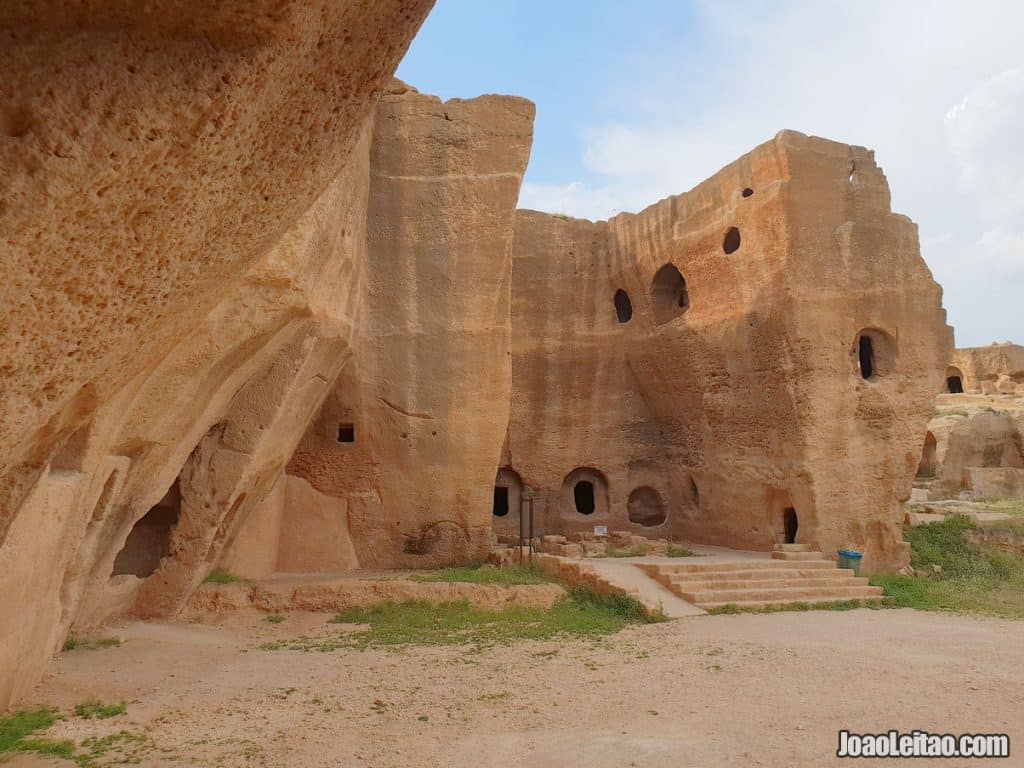
Dara is located 30 km southeast of Mardin, very close to the border with Syria, near the small village of Oguz. Dara was founded in 505 and was an important Byzantine military base in the conflicts against the Sassanids.
Its construction was somewhat rash: Emperor Anastasius I took advantage of a distraction from the Persians, concentrating on the problems in their frontiers to the East, to erect the fortress, in a short time. As they say, “haste is the enemy of perfection,” and it didn’t take long until the poor quality of the initial construction revealed itself. Justinian ordered a profound work of renovation, which included the reconstruction of the walls, the reinforcement, and raising of the towers and the creation of a defensive moat. The fortified city was then called Iustiniana Nova.
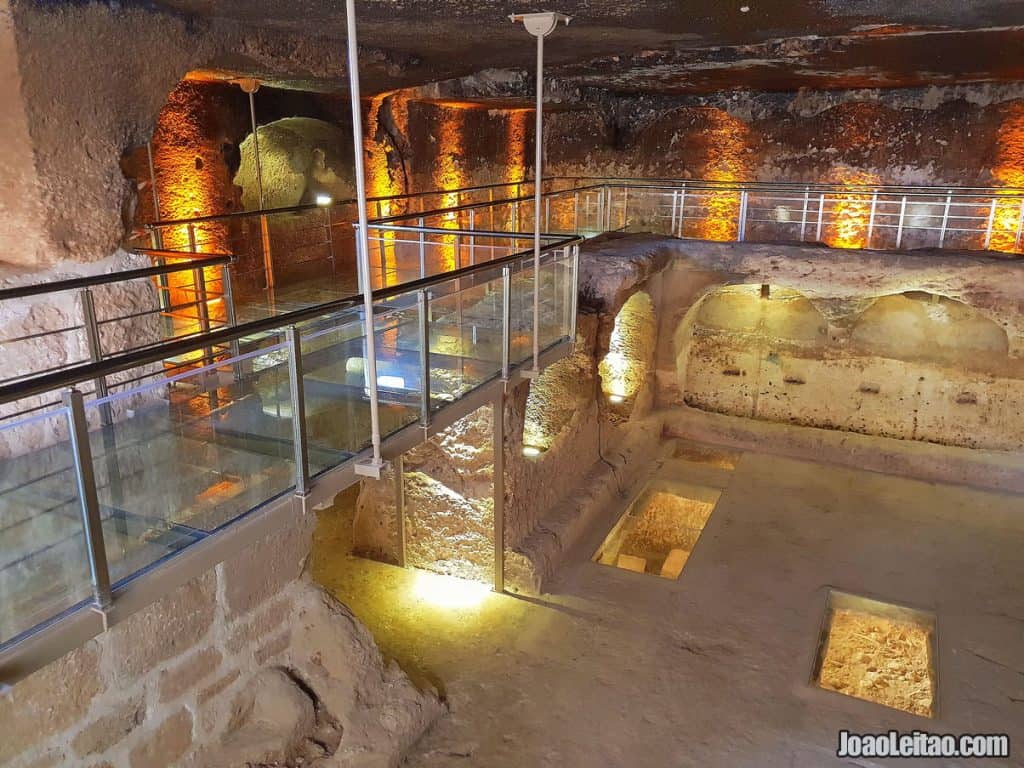
Until the middle of the 7th century, the city changed hands several times, was finally captured by the Arabs and gradually lost importance until it was eventually abandoned.
Nowadays it’s in ruins, but with must-see stops like the huge water cistern, the theater, the Agora, a church, and a bridge. In 1986 an archaeological excavation began, which lasted until recently, and which, among other things, uncovered a necropolis from the late 6th century.
To visit the ruins you’ll need to arrange for private transport in Mardin, a likely base for exploring this area.
6. Diyarbakır
Visit Diyarbakır in Turkey
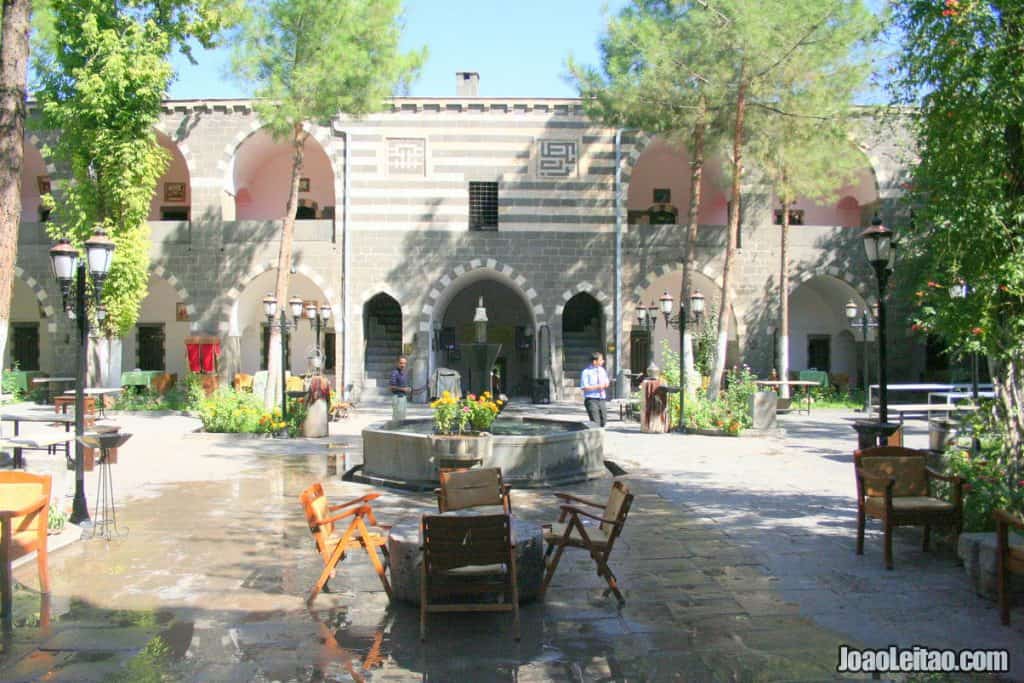
The Turkish Kurds consider Diyarbakir to be the capital city of the independent state they dream about. It’s a city with about one million inhabitants and with a long history.
The first historical record is in an Assyrian document from about 1300 BC. It was briefly incorporated into the Greek kingdom of Corduene and was conquered by the Romans, who built the first system of walls in 297 and remained under the ruling of the Byzantine Empire until the arrival of the Arabs. Later it was included into the Ottoman Empire.
The old town has most of the must-see places for tourists. This area of the city stands out by the impressive black walls, built with basalt stone, with the four main gates, one for each cardinal point.
There is plenty to see in this city: the Archeology Museum, housed in a former prison, the Diyarbakir Grand Mosque, built in the 11th century, is the oldest in Turkey, the Armenian church of St. George, originally from the sixteenth century and recently restored, are just a few examples.
If you have the opportunity, especially if you know someone locally, go to Dengbêj Evi, the house where the ancient art of storytelling is preserved and where even today the elders gather to drink tea, sing and … tell stories.
The walled area of Diyarbakir has been listed as a World Heritage Site by UNESCO since 2015.
7. Eski Savasan Koyu
Visit Eski Savasan Koyu in Turkey
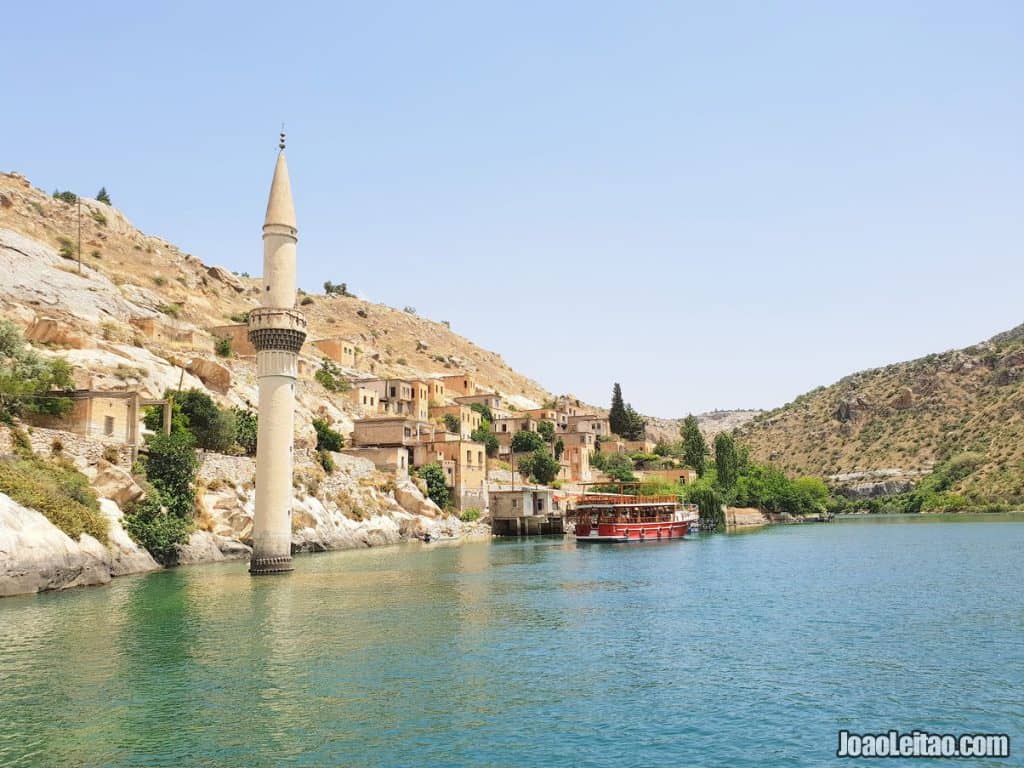
The village of Eski Savasan Koyu, as well as other villages in the district of Halfeti, was partially submerged by the waters of the Euphrates River in 1990. Not by a flood or any other natural phenomenon but due to the construction of the Birecik dam.
The village is now practically abandoned and has become famous for the iconic image of the minaret of the old mosque that rises from the dark waters of the river. The Euphrates now covers most of the houses, and you can walk through the few alleys that have remained above water level, seeing the houses, looking at the beautiful stone carvings that you can still see there.
Next to the water, there is a café, usually open, but this is the only trace of human presence that you will find there.
8. Euphrates River
Visit Euphrates River in Turkey
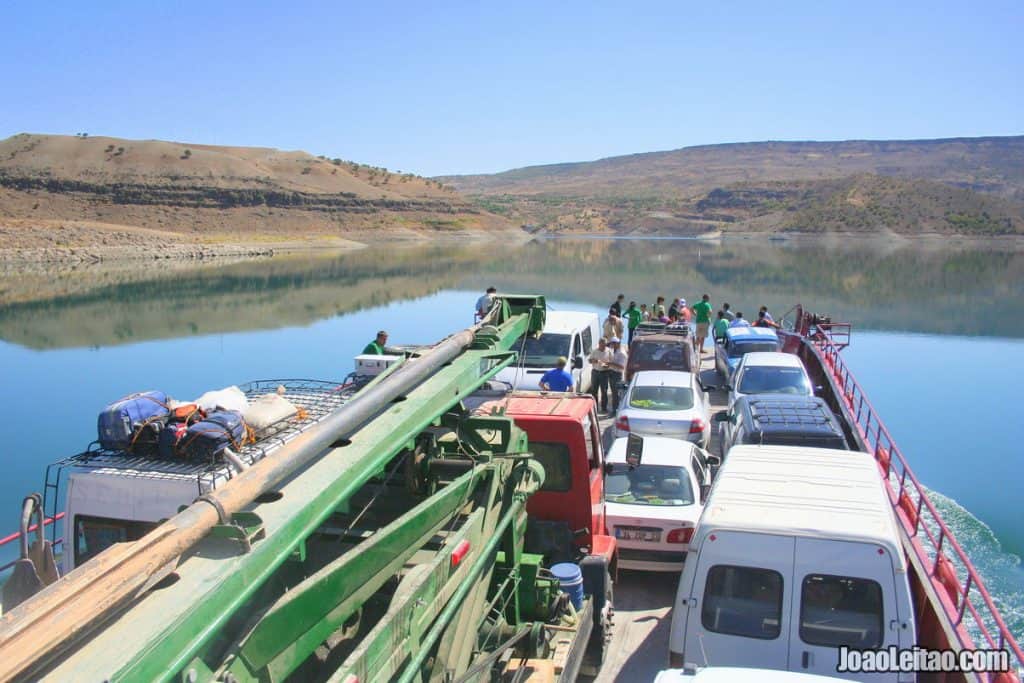
The Euphrates River, as well as the neighboring Tigris River, played an essential role in the development of the civilizations that started in Mesopotamia and marked the beginning of history.
Sumer, Assyria, Babylon gave way to Persia and to the different dynasties that ruled there. Probably none of this would have been possible without the fertilization of those lands that was caused (and still is) by these rivers.
With 2,800 km, the Euphrates is the longest river in Western Asia, crossing Iraq, Syria, and Turkey, but its river basin extends to other countries, such as Saudi Arabia and Iran.
On its banks are some of the oldest cities of the region and a traveler will surely come across its winding waters several times.
The river collects most of its water from rainfall and the defrost that happens each winter, reaching maximum flow in April and May. It has two springs, both in Eastern Anatolia – Turkey, and ends at the Persian Gulf in Shatt al-Arab, Iraq, after having merged with the Tigris.
In recent years the Turkish authorities have developed a controversial project that involves building 22 dams in the course of the Euphrates, to increase irrigation capacity in the Eastern Anatolia fields and generate enough electricity to supply the entire region. However, the number of settlements destroyed by the creation of the reservoirs is considerable, including some places of historical relevance such as Hasankeyf.
9. Gaziantep
Visit Gaziantep in Turkey
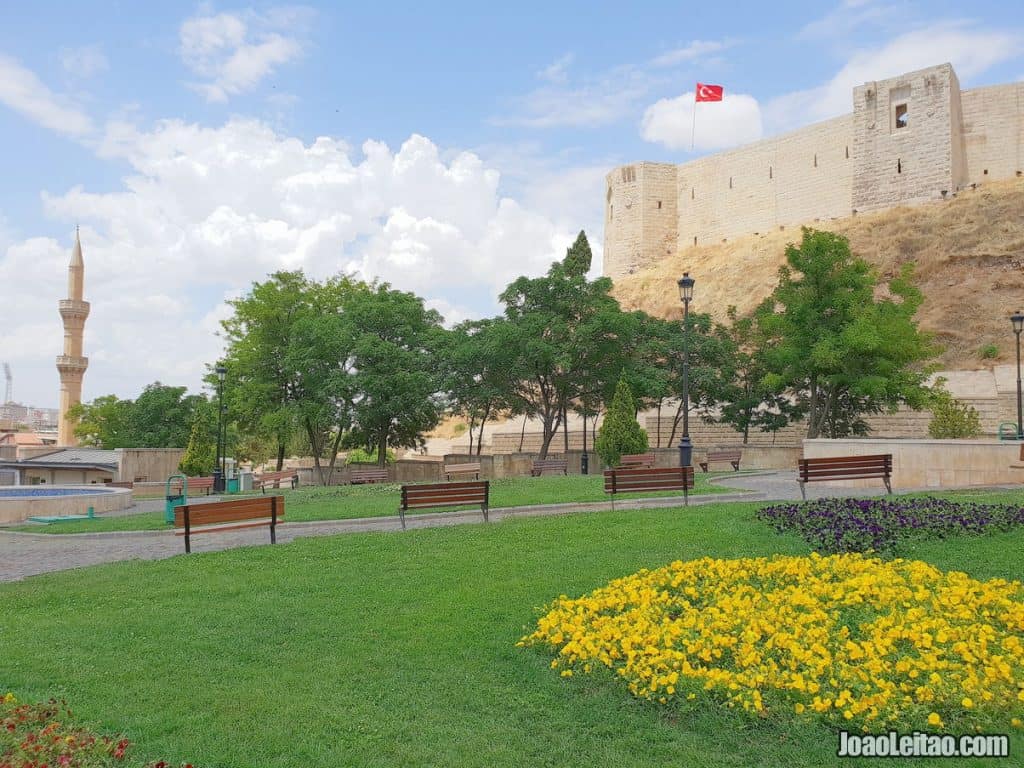
With about one and a half million inhabitants, Gaziantep is a considerably sized city with a lot to see for travelers. But let’s start with a little history …
There are traces of human presence in the Gaziantep area that go back to 4000 BC but the foundation of the city is linked to the kingdom of Yahmad, later controlled by the Hittites. Byzantium controlled Gaziantep for some time, and the citadel and fortress of the city were restored by that time. Then came the Arabs, later came the Crusaders, then the Armenians and in 1516 was conquered by the Ottomans.
One of the city’s greatest attractions is the Zeugma Mosaic Museum, which displays fabulous panels that were removed from that archaeological site before being flooded by the Birecik dam.
Bakircilar bazaar Çarşisi is another must-see, as is the 12th-century castle on top of a hill and the city’s many historic mosques.
If you have a sweet tooth, don’t miss the pistachio candies. It’s true you can find them all over Turkey, but here the pistachio baklava are worth the trip.
10. Gobekli Tepe
Visit Gobekli Tepe in Turkey
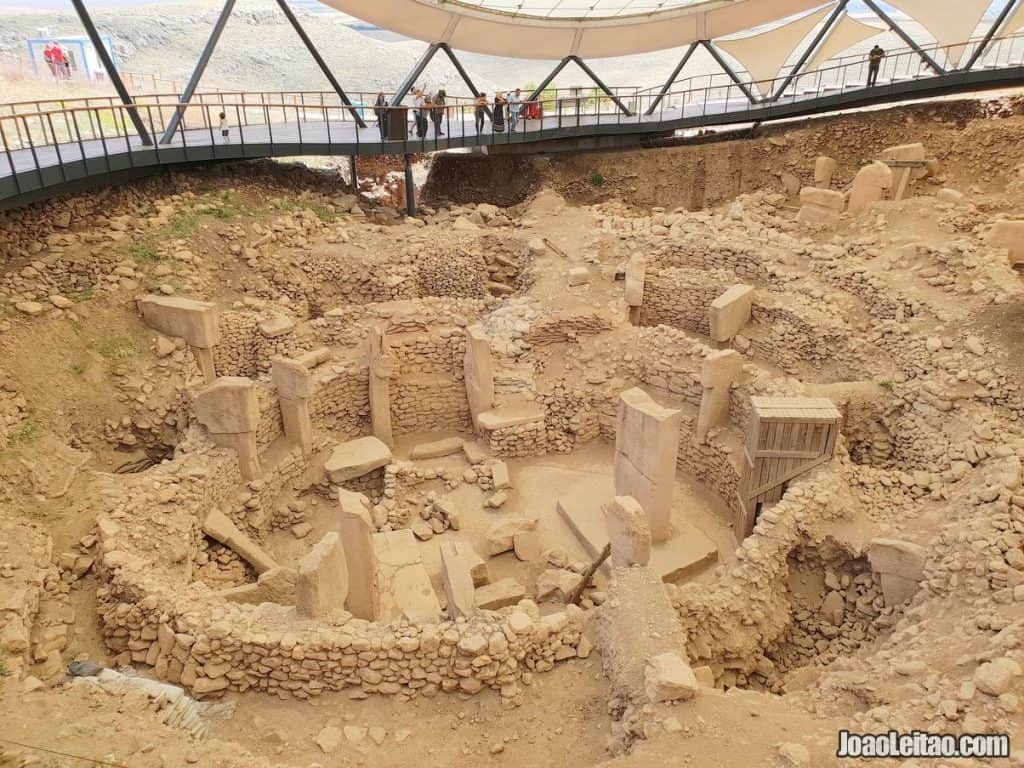
Göbekli Tepe is a place of extraordinary scientific meaning. Why? Because apparently, it is the oldest temple built by humankind. Although it was referenced in 1963, it was only in 1994 that its real importance was revealed when the German archaeologist Klaus Schmidt began studying the site.
The huge stones laid out there, the earliest megaliths known to date, are about 11,000 years old, 6,000 years older than Stonehenge. The people who put them on that hill didn’t have any metal tools, nor had they even discovered pottery. His discovery and subsequent study overshadow what was once known as the landmark that marked the beginning of human religion.
The details of the religious rites celebrated here are still unknown. Schmidt believes the site was a necropolis, but it’s an opinion that lacks scientific grounds.
Göbekli Tepe, or “Potbelly Hill,” is about 10 km from Sanlurfa but you need a car to visit it. It was added to the UNESCO World Heritage List in 2018.
11. Gulgoze
Visit Gulgoze in Turkey
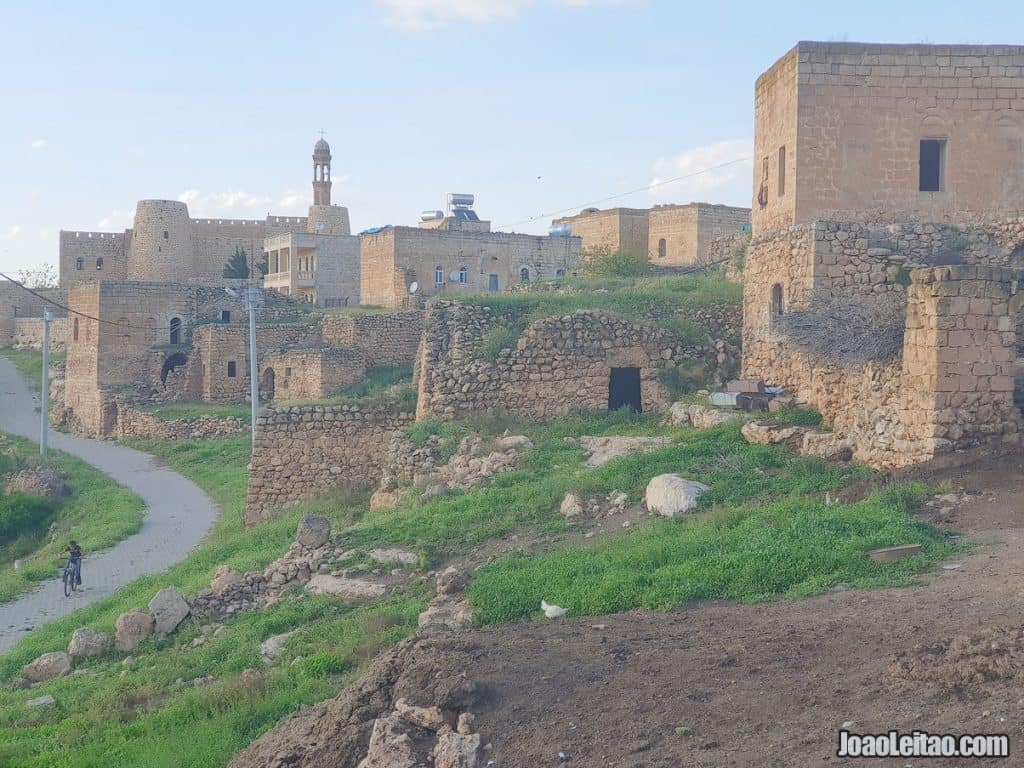
Gülgöze is a mountain village inhabited by a Syriac community just 11 km east of Midyat. The settlement was established around the 10th century.
In 1915, when Christian populations living in the Ottoman Empire were being persecuted and massacred, Gülgöze became a refuge for Syrians from other places. About two hundred families lived here at the time, but soon there were about 22,000 people in the village. A militia fought the Kurdish attackers for two months, with heavy casualties on both sides, until the Muslims gave up and withdrew.
Nowadays Gülgöze is an interesting place. Only 12 families live there, and there are some ruined stone houses. There are three churches that can be visited.
In theory, you’d need a car to visit this picturesque village, but if you feel comfortable walking, you can easily walk there. It will take about two and a half hours each way.
12. Gungoren and Mor Gabriel Monastery
Visit Mor Gabriel Monastery in Turkey
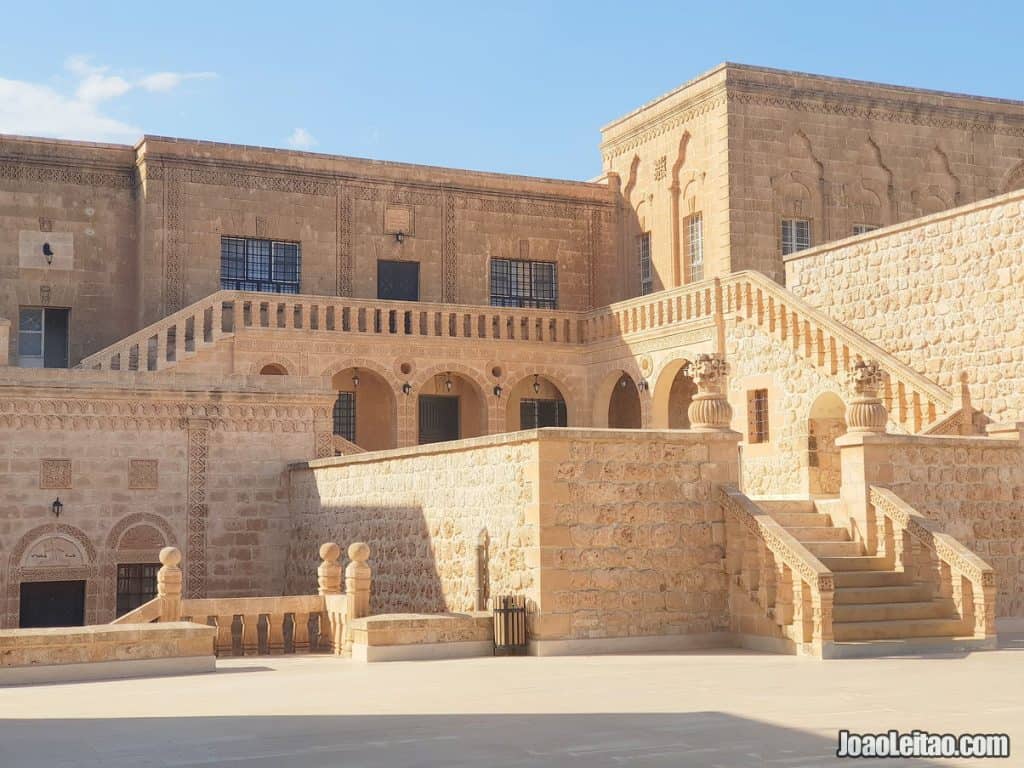
Gungoren is not far from Gülgöze, but unlike that other village, you can’t easily get here on foot: it is 25 km southeast of Midyat and to visit you’ll need a car.
It’s a small village, with less than 200 people, Syriac Christians, located on top of a hill and surrounded by forest. There is a church in the village, dating from 778, but its main attraction is the monastery of Mor Gabriel, 2 km away.
Mor Gabriel, also known as Deyrulumur, is the oldest Syriac monastery in the world. It was created in 397 by Mor Shmu’el and his disciple Mor Shem’un. In the 6th century, 1,000 monks lived there, who even received direct donations from the Byzantine emperors. The monastery is still active and can be visited, and it’s even possible, with permission, to stay overnight.
13. Halfeti
Visit Halfeti in Turkey
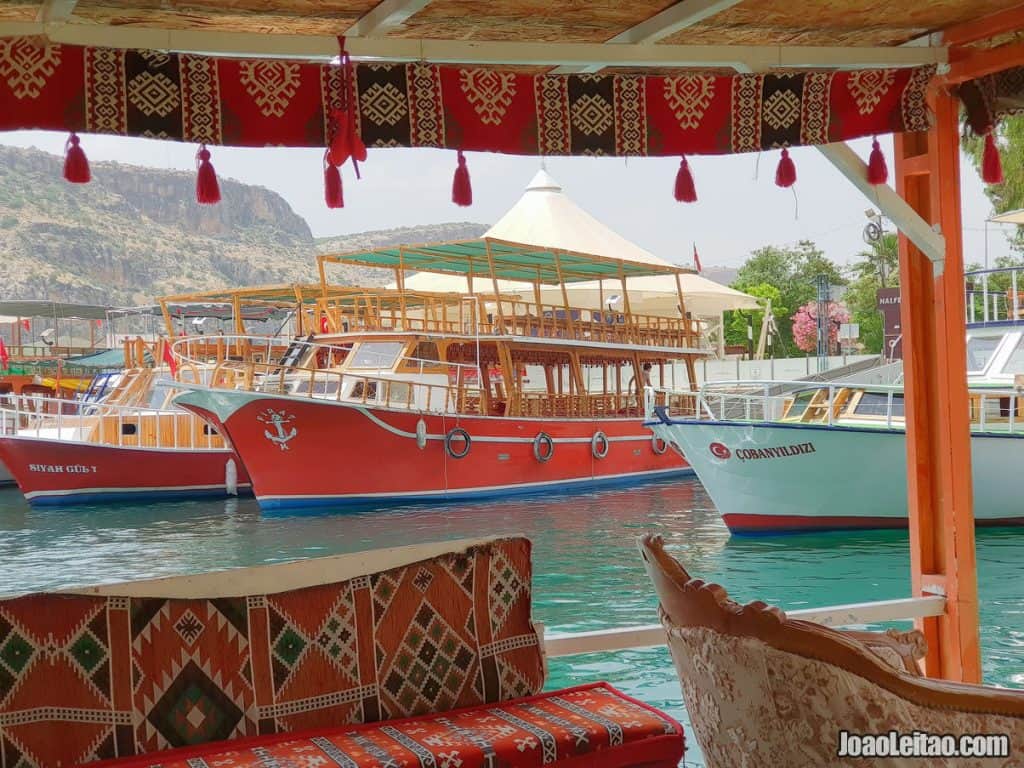
Halfeti, founded in 855 BC by King Assyrian Shalmanaser II, is located 102 km east of Gaziantep and was one of the villages affected by the Birecik dam and its reservoir. Unlike others, it was not submerged by the waters of the Euphrates, but part of the village didn’t escape it.
You can see the mosque on the edge of the new lake. If you look at the surface of the water, you will see the shadows of the houses that were submerged, an almost surreal sight.
Although these changes have transformed the area into a tourist attraction, there aren’t many accommodation options in Halfeti, mostly because the village is part of the “Cittaslow” movement that advocates a relaxed and leisurely urban culture.
Next to Halfeti there is a fortress – Rumkale – originally built by the Assyrians, and an abandoned, also semi-submerged village, Savasan Koy.
You can take a boat trip from Halfeti to Rumkale, where there is an interesting fortress on top of a hill, and up to Savaş.
To get to Halfeti from Gaziantep or Sanliurfa, you’ll first have to take a shuttle to Birecik and then, from the market, another one to Halfeti.
14. Han el Ba’rur Caravanserai
Visit Han el Ba’rur Caravanserai in Turkey
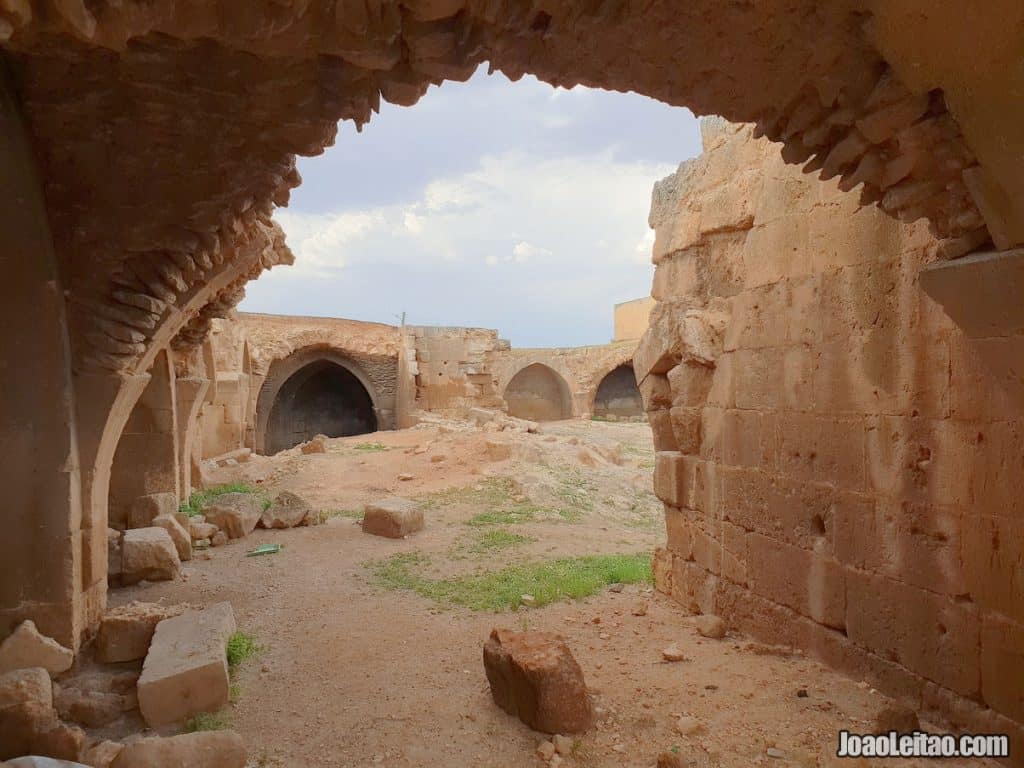
This old Caravanserai – a historical complex that provided accommodation to merchants and travelers – is located about 70 km from Sanlurfa and can be visited on a combined tour to Harran. You’ll need a car to get there.
It is thought that this caravansarai was built here – on the road to Baghdad – in 1219, and was destroyed shortly after when the Mongols invaded and looted these places. It was later used as a stable by the locals, and never rebuilt.
The entrance was restored later, but the building’s rooms remain the same. Unlike other complexes of the same kind in Central Anatolia, it’s somewhat austere, with the arches of the windows being the only aesthetic highlight, which remotely makes us think of a Gothic influence.
On the opposite side of the road, there are support structures, namely a well and a cistern.
15. Harran
Visit Harran in Turkey
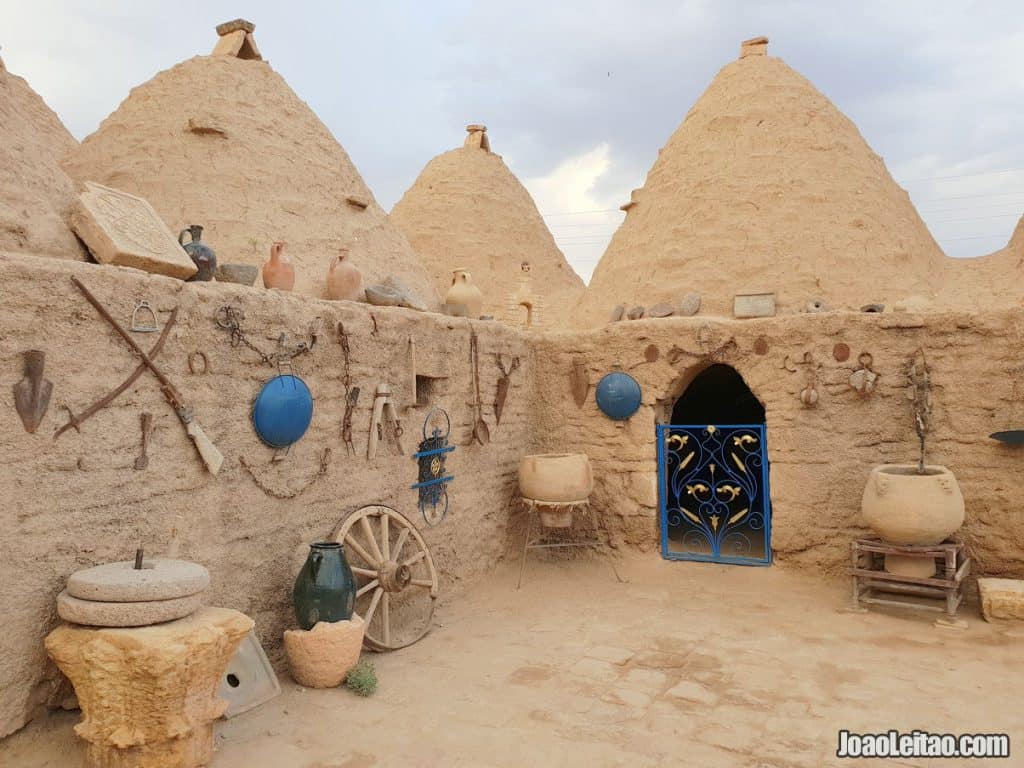
Harran has no more than ten thousand people but, located on the road between Nineveh and Carchemish, it was an important city of Ancient times, having several references in the Bible that point it as the place where Abraham and his tribe stayed for several years.
Nowadays its main reason of interest is the traditional houses, shaped as honeycombs, built according to techniques that date back 3,000 years. They’re made of adobe or clay bricks, offering excellent thermal insulation, keeping the house warm in winter and cool in the summer. They have a conical shape, with an opening at the top, designed to let out hot air when temperatures are high. In addition to that, they can withstand earthquakes, strong winds, and intense rains. And they are easily extended, functioning as units, in case the family grows.
But there are more must-see things in Harran. There are some old walls, and in its surroundings, there is a castle where three polygonal towers still exist. You can also see the ruins of a mosque destroyed by the Arabs when they arrived here.
Harran is located about 40 km south of Sanslurfa and can be reached by public transport. It may be challenging, however, especially on the return journey. On the other hand, if you have a car, you’ll be able to stop at several points of interest in the area.
16. Hasankeyf
Visit Hasankeyf in Turkey
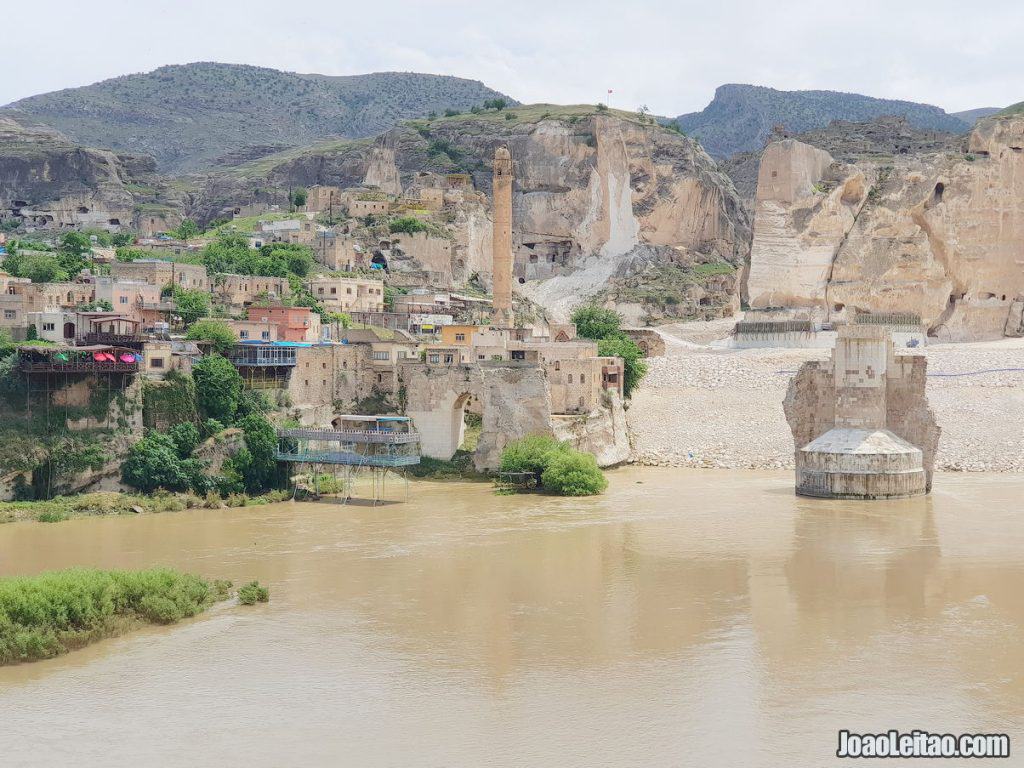
Of the several locations submerged, wholly or partially, by the reservoirs of the ambitious Turkish dam construction project, Hasankeyf is the one with greatest historical significance.
It is located 35 km from Batman, to the south, and you can visit traveling from this city. However, you should look for updated information, because due to the construction of the dam and the protests, the authorities may have blocked the access to Hasankeyf.
Hasankeyf breathes history. Its streets are fascinating, and the citadel closed several years ago due to the danger of falling, rises at 100 meters high, as it overlooks the course of the Tigris River and the village. There are four mosques, two palaces, a historic tomb and the mausoleum of Zeynel Bey, son of a 14th-century sultan.
You can climb to the top of the cliff from the city, passing through the interior of a deep gorge, sometimes physically challenging.
Hasankeyf’s future remains uncertain. It will probably disappear, totally or partially, under the waters of the reservoir of Ilısu dam, but a political turnaround may save this historic village. Or at least part of its heritage assets may be transferred to another location.
17. Mardin
Visit Mardin in Turkey
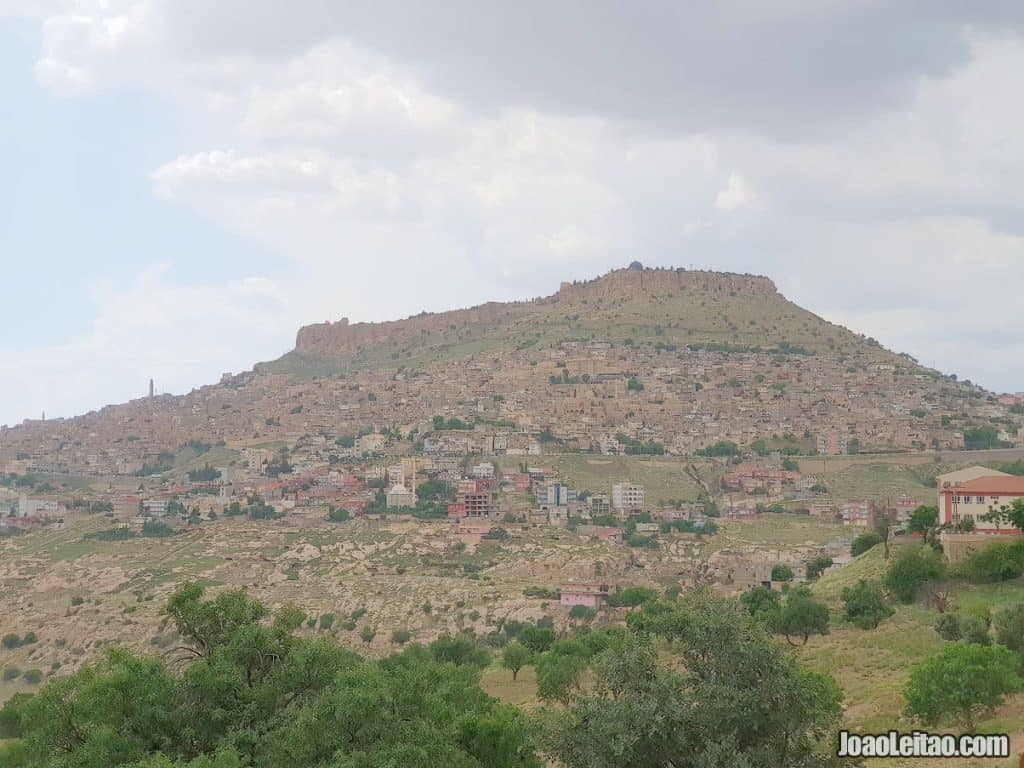
The city of Mardin, capital of the province with the same name, is located near the border with Syria. It is divided into two parts: the old Mardin, on top of a hill, and the new Mardin, in the valley, resembling an urban suburb.
In Mardin, two communities coexist, sometimes tensely, Arabic and Kurdish, the first living essentially in Old Mardin and the second in the new city.
Its historical heritage is massive, being considered one of the oldest cities in the world regarding untouched buildings. The streets of Mardin and especially its alleys are lined with medieval buildings that remain in their original form.
There are 22 mosques, especially the Great Mosque, which stands on one of the highest points. It is possible to get to a higher height for spectacular photographs of the minarets, and temple domes and the plain below that extends to Syria.
There are also three beautiful madrasas, and you must at least visit the Zinciriye madrasa. Markets are another must-see spot in the city. Here you’ll experience a feast for the senses, with colorful vegetables and fruits on display, engulfed by the smell of fresh bread baked from the bakeries hiding in the arcades.
Unfortunately, the citadel of Mardin is still used by the army and is therefore out of reach for visitors. But somewhere between the grounds overlooking the mosque and the top of the hill where the military base is located, you can find an old cemetery with beautiful tombstones.
18. Midyat
Visit Midyat in Turkey
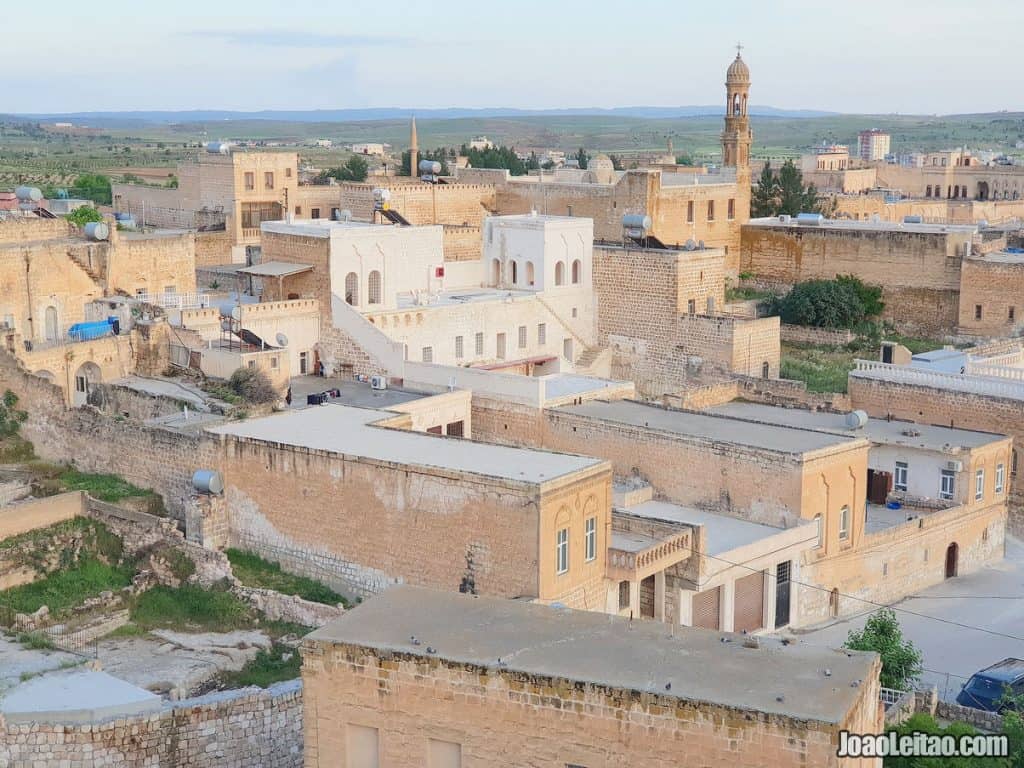
It’s located in the province of Mardin and has about 60,000 people and a history that gets lost in the hazes of the past. It’s mentioned in Assyrian inscriptions in the 9th century BC under the name Matiate and since that time was part of several empires and kingdoms having been ruled by Assyrians, Armenians, Medes, Persians, Greeks, Romans, Byzantines, Arabs and Ottomans.
Midyat is historically an Assyrian or Syriac city, and until the massacres of 1915, those were the majority of the population. Consequently, due to various factors, the Christian population has been gradually reduced and most of its houses and nine churches are now closed.
Its historic center seems something out of the tales of the Arabian Nights. A world made up of alleys lined with old houses adorned with carved stone, fabulous bazaars and Muslim and Christian temples that you’ll come across at the most unexpected spots.
If you can, visit the monastery of Mor Abrahom Hobel, near the historic center, but be aware that it may be closed.
19. Nemrut Dag
Visit Nemrut Dag in Turkey
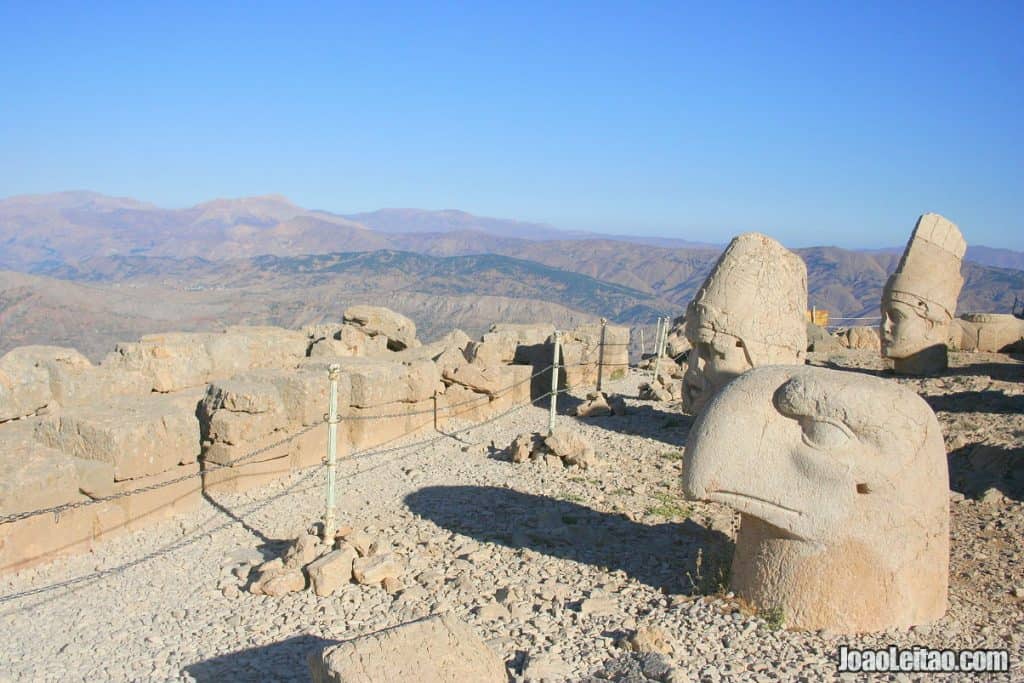
Mount Nemrut has been a UNESCO World Heritage Site since 1987. It’s famous for the sculptures found at its summit, created by the Kingdom of Commagene, a political unit that was built on the fallen empire of Alexander the Great.
This kingdom lasted only for 200 years and was later incorporated into the Roman Empire. But for as long as it existed, it was well-known for its necropolises and tombs. It’s precisely the final resting place of King Antiochus I that we find at the top of Mount Nemrut.
The statues are between eight and nine meters tall, and there are representations of the monarch, lions, eagles, and various Greek, Armenian and Median deities. Originally the statues were in a seated position, but at one point in time they were vandalized, their heads were removed and left scattered in the places where see them today.
There are also bas-reliefs and, of course, the mausoleum that should be the tomb also adorned in the same style of the sculptures. Although the historical beginnings are clear, the archaeologists have not yet found the king’s tomb.
20. Nusaybin
Visit Nusaybin in Turkey
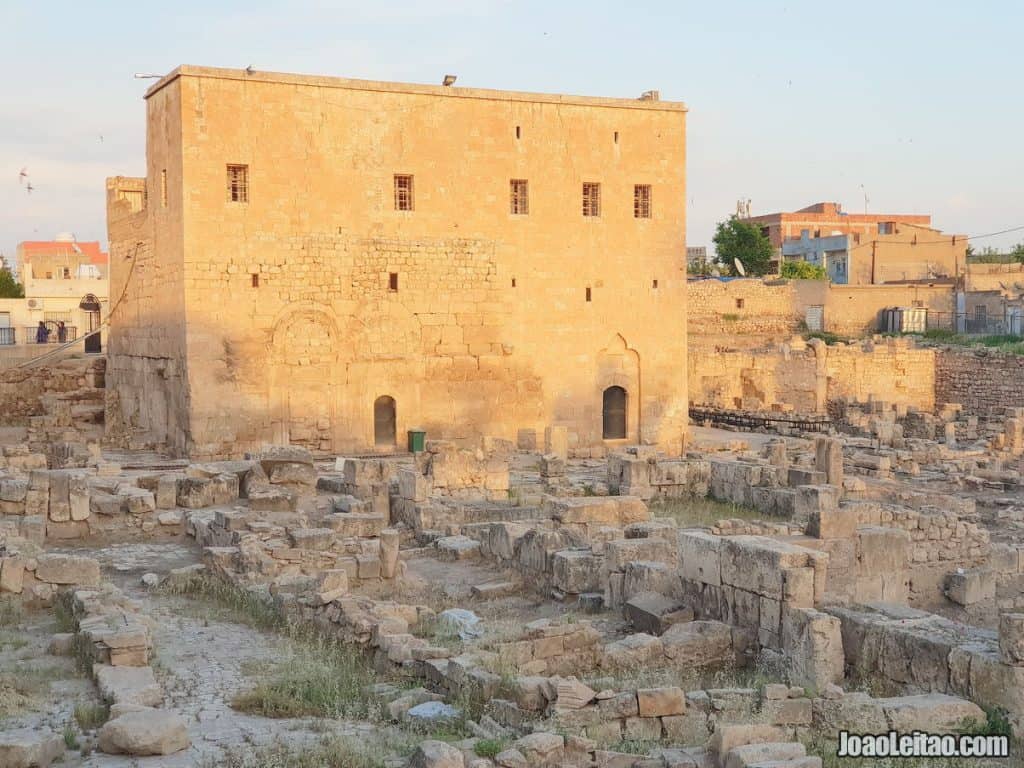
This city of 80,000 people is located in the province of Mardin. There are traces of human presence since 3000 BC, but the first historical reference to the area dates from 901 BC.
Multiple civilizations controlled the city over time, often changing hands continuously, as was the case of the time when Romans and Parthians fought for the control of the region.
Unfortunately, part of the city was destroyed in 2016, following armed conflicts between supporters of the PPK – the Kurdish party fighting for the region’s independence – and government forces.
If you travel here, look for the church of St. Jacob, dedicated to the beatified bishop of Nusaybin who died there in 350.
Not far from Nusaybin is the monastery of Der Mor Evgin, built before 363 and showing similarities with the monastery of Sumela. The Syriacs call it “the second Jerusalem,” and it was the first complex of its kind in the region.
21. Rumkale
Visit Rumkale in Turkey
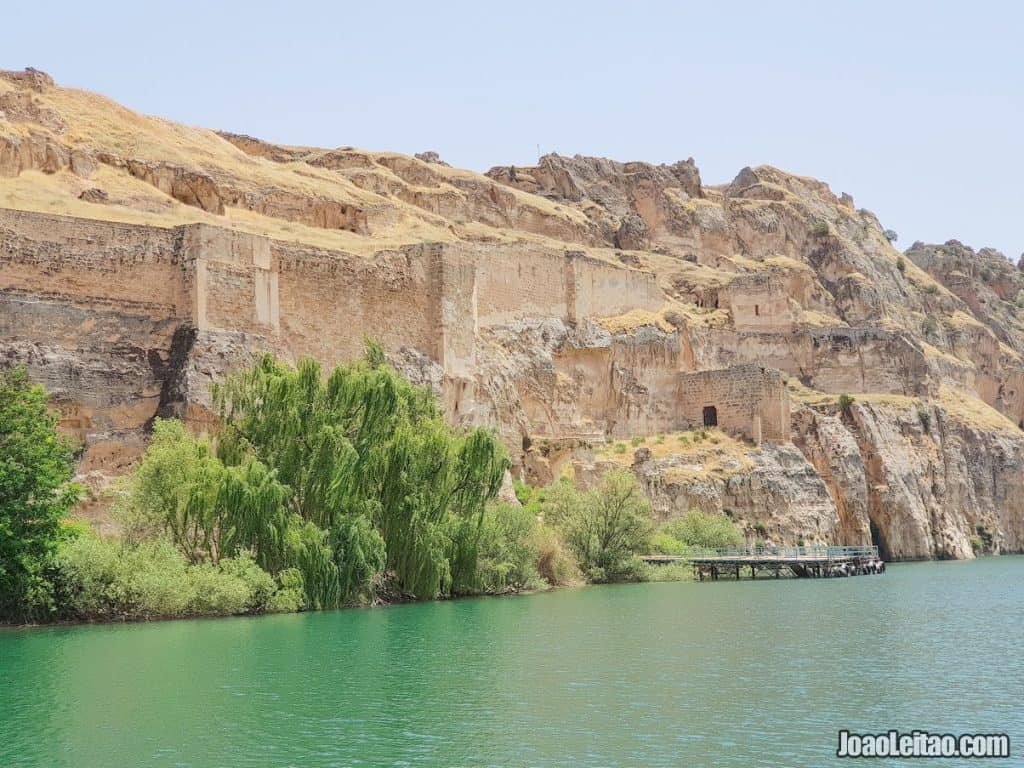
Rumkale is the name of an ancient fortress, built on top of a hill that above from where the Euphrates River meets its Merzimem tributary, 50 km west of Sanliurfa.
The place has biblical associations, and it may have been here that the apostle John lived and wrote the holy book of the Christians.
The fortress shows influences of Greek and Roman military architecture, with later medieval additions. In addition to the military structures, you can see a mosque, the church of S. Nerses and the monastery of Barşavma, all well-preserved.
Rumkale was closed to tourists for some time, apparently for renovation and restoration work, and has recently reopened, with plans for a serious investment in tourism, including incentives for private funding.
The site was affected by the creation of the reservoir of the Birecik dam, becoming a kind of peninsula where one arrives by boat, from Halfeti. You can choose a private trip, which will cost about 100 TL, or share the boat with others, paying a fraction of that value. The journey takes 20 minutes, and after Rumkale the tour continues to Savas, another of the villages partially submerged by the waters of the reservoir.
22. Sanliurfa
Visit Sanliurfa in Turkey
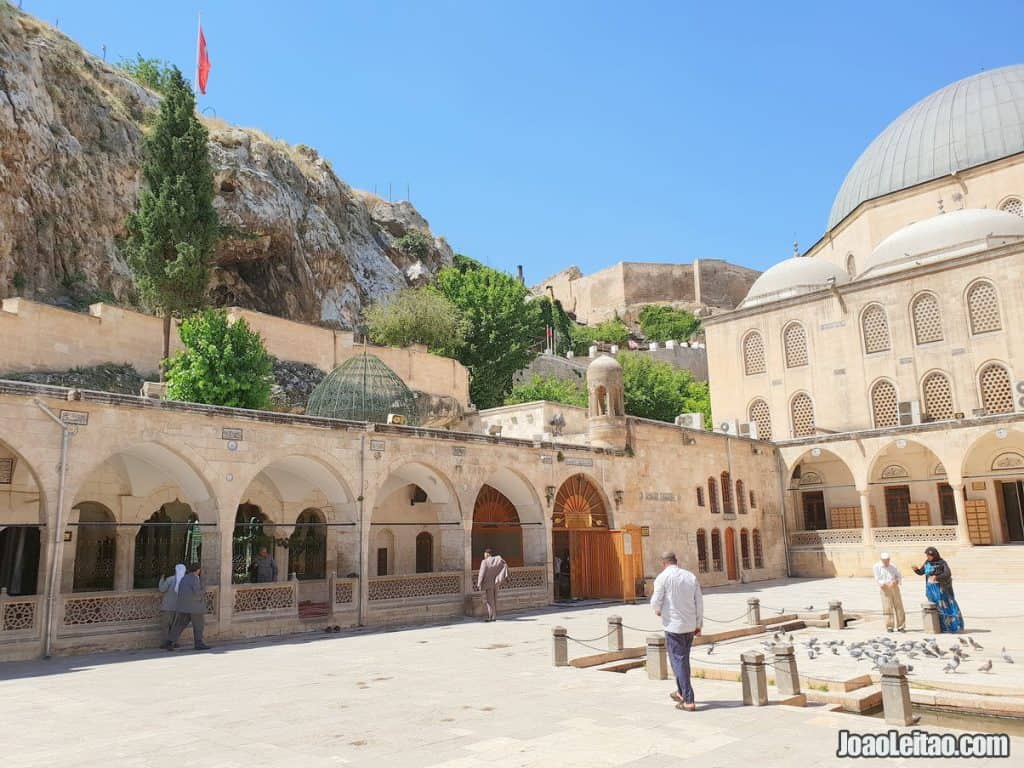
Sanliurfa is one of the great cities of this Turkish region with about two million people. It’s common for people to refer to it as Urfa. The first part of the name means “glorious” and was given in 1984 to honor the city’s resistance to the Allied troops during the so-called War of Independence, which followed the First World War.
Because of its rich heritage and the numerous points of interest in the region you must visit, it’s best to stay in Urfa for at least four days.
One of its most iconic sites is the “Pool of Abraham,” where according to the legend Nimrod had Abraham burn in a fire, but God turned the fire into water and the coals into fishes, which now live as sacred animals in the lake.
The Dergah complex is a must-see: it’s a landscaped space, which includes the impressive and clearly Ottoman Mevlid-i Halil mosque, and the Hasan Padisah mosque, as well as a cave where, according to local tradition, Abraham was born. Further up is the castle of the city.
The Urfa Museum is recent, having opened in 2016, following the most modern principles and techniques of museology. It’s a space dedicated to the history and ethnography of the region, with a beautiful collection of archaeological artifacts and a series of fascinating life-size dioramas.
23. Savur
Visit Savur in Turkey
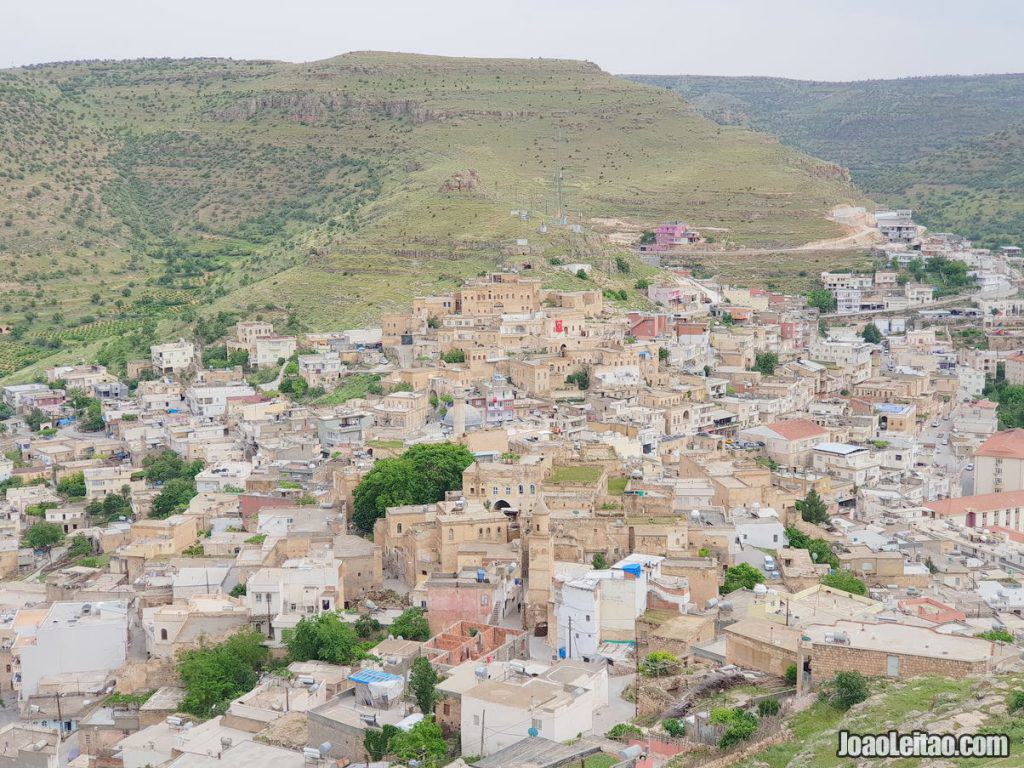
If you visited Mardin and liked it, you should come to Savur. Imagine a Mardin smaller in scale and without the tourist crowds.
Most of Savur’s houses date back to the 19th century, and just as in Mardin, at the top of the hill around which the village grew, stands a fortress. The best way to visit is to simply get lost and wander off the main street and into the alleys. It won’t be difficult to return to the center of Savur whenever you want.
But if you’d rather have some references, look for the Ancient Mosque, it’s, in fact, a changed Syrian church, and climb up to the fortress for a broad view of the city. And if you want to spend the night in Savur, look for Hacı Abdullah Bey Konağı house. You will be accommodated in style, traveling back in time to the Ottoman era.
If you have a car, be sure to drive through Dereiçi, 7 km to the east. This village inhabited by Christian Syrians has two restored churches that are worth a visit.
Access to Savur is simple: there are minibusses from Mardin, and the journey takes only one hour.
24. Sumatar Ruins
Visit Sumatar Ruins in Turkey
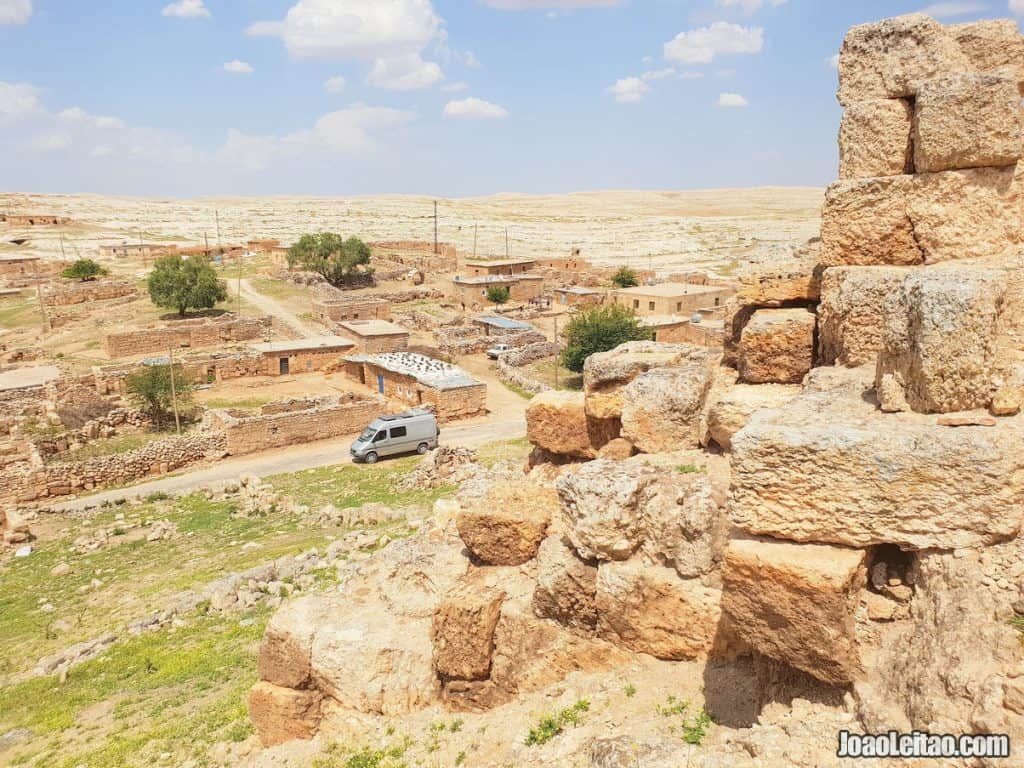
Sumatar Harbesi is now an abandoned settlement, located about 60 km southwest of Sanliurfa. Shepherds began settling here to collect water.
There are a series of ruins and tombs, as well as an artificial hill some 50 meters high, around which seven temples were built, with underground entrances. These temples are dedicated to the gods of the Moon and the Sun and five other planets, Saturn (Anu), Jupiter (Enlil), Mars, Venus (Ianna / Ishtar) and Mercury. Syriac inscriptions dating to the 2nd and 3rd centuries were found here, which refer to the God of the Gods, which is understood as a reference to the divinity Sin, the god of the Moon. The scientific community believes that Sumatar, in addition to being a necropolis, was also an astronomical observatory.
Since 2012, an there’s been an archaeological excavation on site, which discovered 120 tombs, dating from the beginning of the Bronze Age, that is, 5,000 years ago. Excavations are continuing, with some recently discovered tombs and something amazing: artifacts that are clearly toys for children, something that wasn’t believed to have existed at the time.
Some of the structural remains of Sumatar seem to correspond to a fortification, and there’s an underground temple called the Pognon’s cave, with inscriptions in Syriac and various bas-reliefs on the walls.
25. Şuayip Şehri
Visit Şuayip Şehri in Turkey
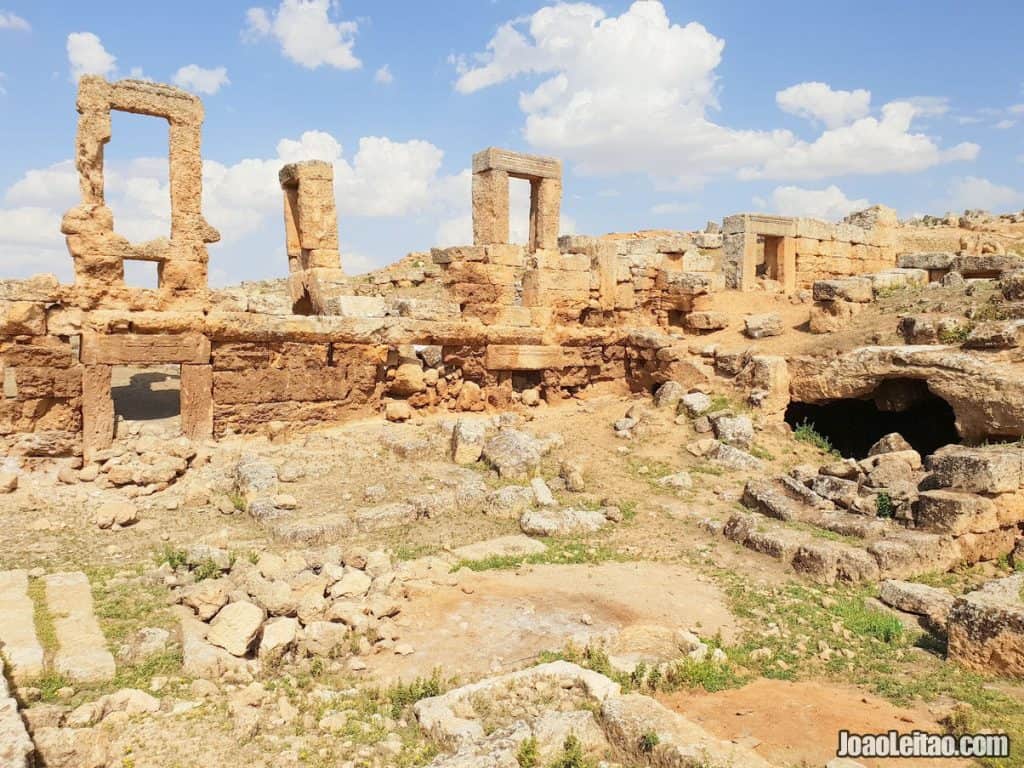
Not far from Harran, in the province of Sanliurfa, lies the ancient city of Şuayip, an archaeological site dating back to Roman times, composed of a series of ruined structures known as the Ephesus of the Southwest.
In fact, there’s not much left of the old Roman city: some structures, walls, arches. In the center of the city, there’s a high number of tombs, dug in the rock.
26. Tektek Mountains National Park
Visit Tektek Mountains National Park in Turkey
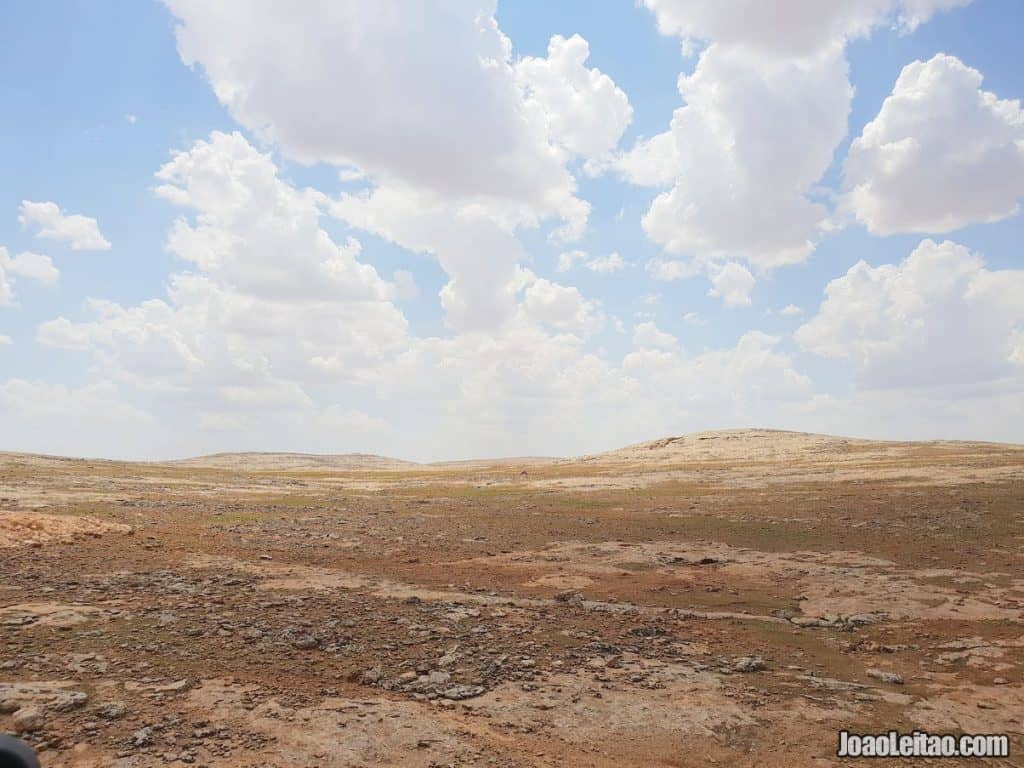
This National Park was created in 2007 and covers an area of 19,335 hectares. In addition to the natural resources of the park, you can visit the ruins of Sumatar, Senem, and Şuayp here.
Throughout history, these mountains have had people of diverse civilizations, but the animal species that inhabit have not changed. You can see lynxes, gazelles, wolves, foxes, to mention just a few examples, and many birds that will delight birdwatching enthusiasts.
To visit it you’ll need a car, but you can count on a fascinating landscape and many historical traces to explore
27. Yesemek Quarry and Sculpture Workshop
Visit Yesemek Quarry in Turkey
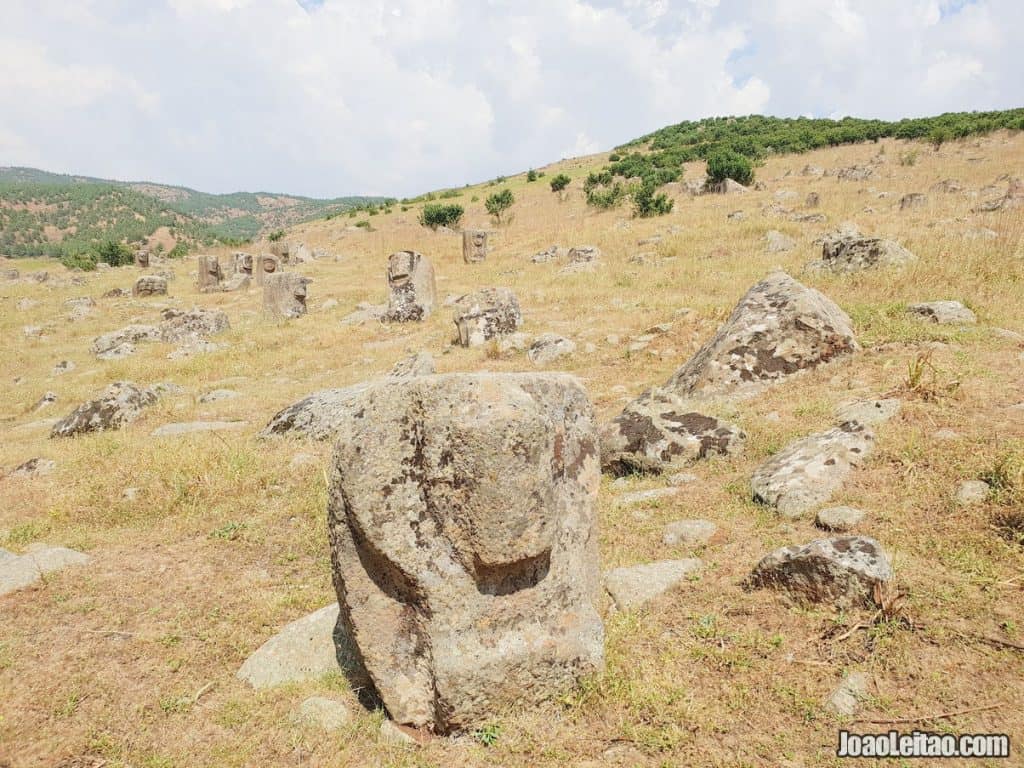
This place is like an open-air museum and, located in the province of Gaziantep, and it used to be a Hittite quarry. With its 100,000 square meters, it’s the largest area of extraction and stonework known from Ancient times in the Middle East.
The site was discovered by the Austrian archaeologist Felix von Luschan when in 1890 he was excavating at Zincirli. In the late 1960s, a team of Turkish archaeologists resumed work, which uncovered 200 sculptures.
There was, in fact, a sculpture workshop, established by the Hittite king Suppiluliuma I, who ruled between 1344 and 1322 BC. With the fall of the Hittite Empire, the works stopped, to be resumed later, in the same place, in the Aramaic era. With the arrival of the Assyrians, it stopped again, this time forever.
Several types of sculpture were found, the most frequent in the form of a sphinx, with the figures presenting a woman’s head and lion’s body. There are also statues of divinities and bas-reliefs depicting various scenes. All this carved in basalt.
The Yesemek Quarry and Sculpture Workshop are on the tentative list to become a UNESCO World Heritage Site.
28. Zeugma
Visit Zeugma in Turkey
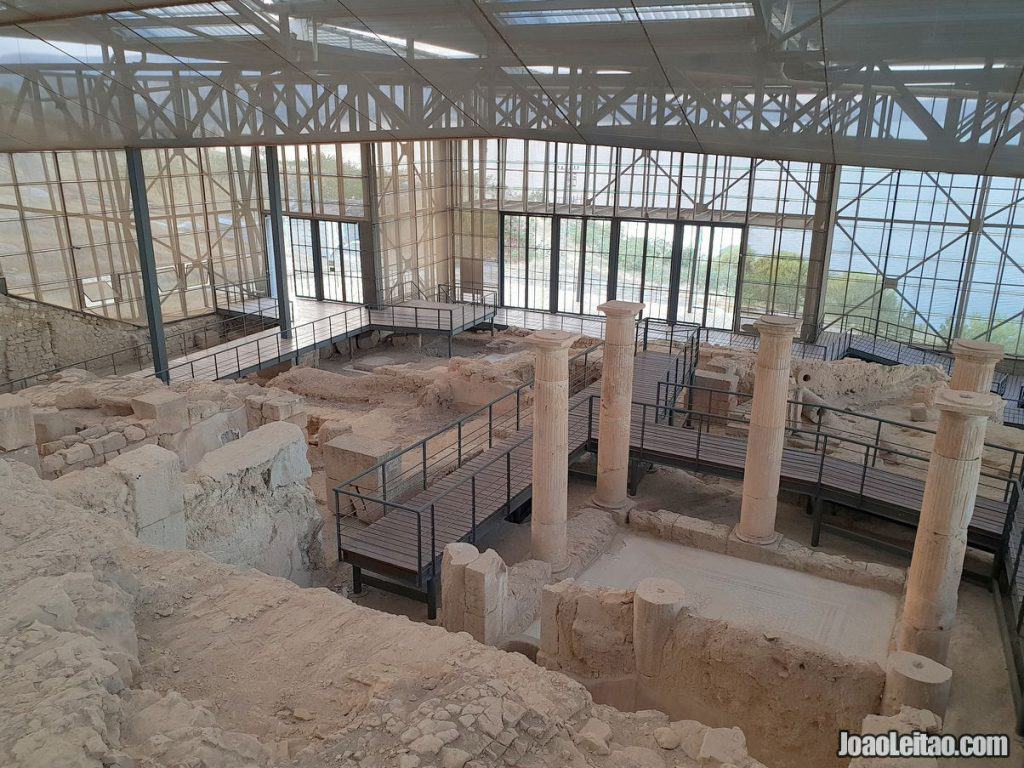
Zeugma was founded in 300 BC by Seleucus I Nicator, one of the generals of Alexander the Great. Its named after a bridge that connected the two banks of the Euphrates and Zeugma means “bridge” or “passage” in ancient Greek.
In 256 BC Zeugma was conquered by the Romans, and the transition to the Kingdom of Byzantium was natural. In 256 the king Sassanid Shapur I destroyed the city, which for a long time did not recover from the damages suffered and indeed never returned to the level of prosperity that it had previously.
The attacks of the Arabs led to the abandonment of the city. The site was later inhabited, but in a disconnected way from the old Zeugma.
Like several other places of historical importance located in the region, Zeugma was partially submerged due to the creation of a dam and its reservoir. It’s estimated that 25% of the area of the city is currently under the waters of the Euphrates.
The magnificent Mosaic Museum of Zeugma, in the city of Gaziantep, was created with elements removed from the site before it was underwater.
Anyway, there’s still much to explore and to be excavated by archaeologists who continue to work on Zeugma.


